Welcome to Wroclaw! Nestled on the banks of the Oder River in southwestern Poland, Wroclaw is known for its picturesque old town, charming canals, and over 100 beautifully restored bridges. This dynamic city boasts a lively, youthful energy that captivates every visitor. Whether you’re exploring its stunning Gothic architecture, sipping coffee in a bustling market square, or hunting for the famous dwarf statues scattered throughout the city, Wroclaw has a lot on tap.
Our Travel Video From Samuel and Audrey on YouTube via Nomadic Samuel + That Backpacker
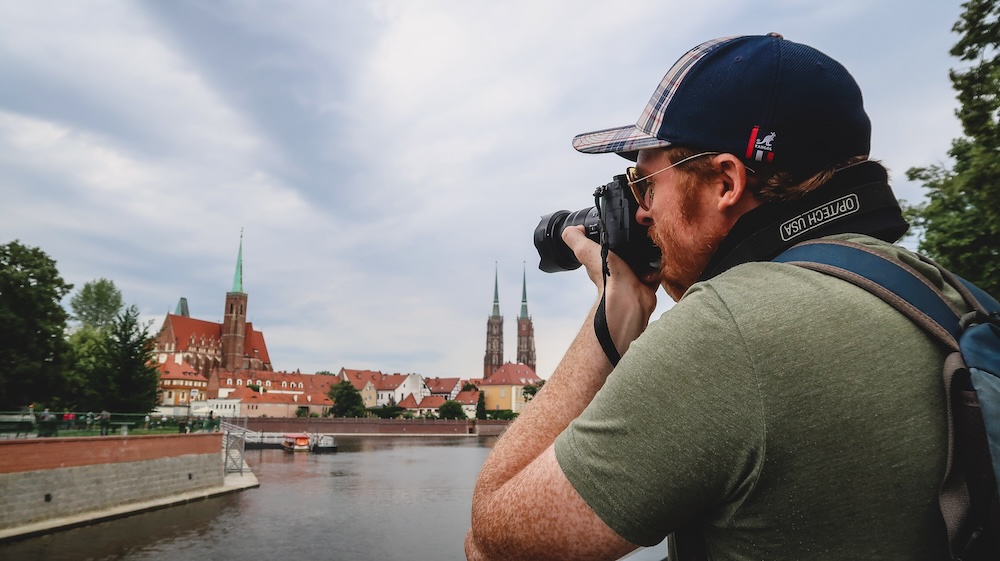
Discovering Wroclaw’s Old Town
Wroclaw’s Old Town is a vibrant tapestry of colorful facades, intricate Gothic spires, and lively cobblestone streets. At its heart lies the Market Square (Rynek), one of the largest and most beautiful squares in Europe, lined with cafes, restaurants, and historic buildings. Dominating the square is the stunning Wroclaw Town Hall, a masterpiece of Gothic architecture that houses the city museum. As you wander through the Old Town, you’ll be charmed by its lively atmosphere, street performers, and hidden courtyards that invite you to explore further.
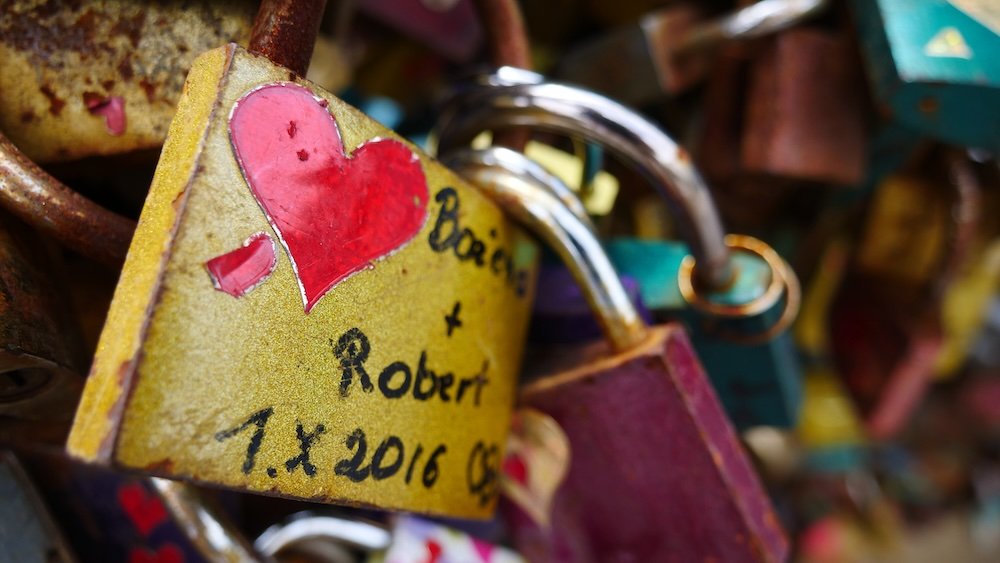
- Market Square: Stroll through the heart of Wroclaw, surrounded by vibrant buildings, bustling cafes, and historic landmarks.
- Wroclaw Town Hall: Admire the intricate details of this Gothic gem, and visit the museum inside to learn more about the city’s history.
- Hidden Gems: Discover charming courtyards and side streets, where you’ll find cozy cafes, art galleries, and unique shops.
Tip: Visit the Market Square in the evening to experience its magical ambiance, with beautifully lit buildings and a lively nightlife scene.
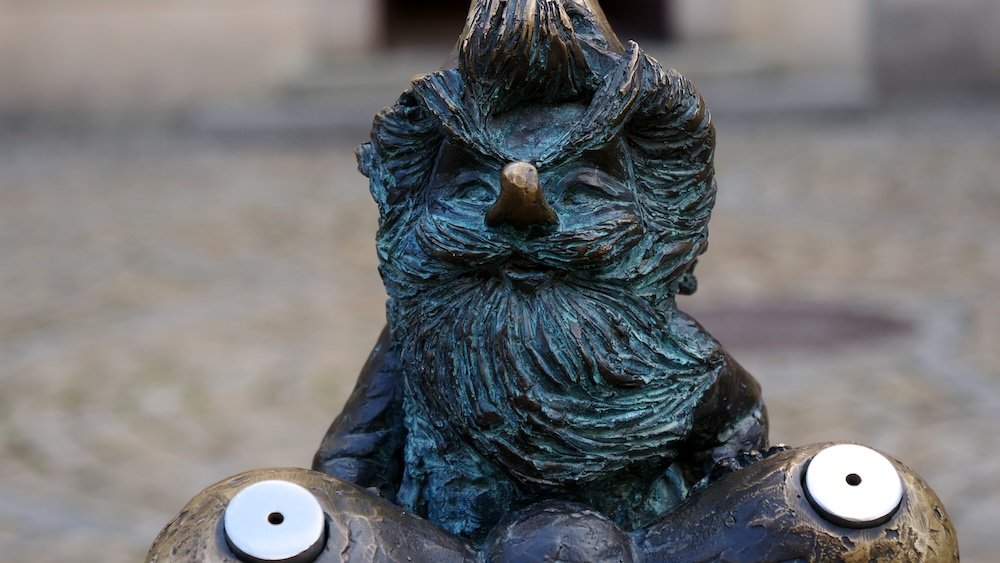
The Fascinating Story of Wroclaw’s Dwarfs
One of Wroclaw’s most whimsical attractions is its collection of over 600 dwarf statues scattered throughout the city. These tiny bronze figures, known as Krasnale, each have their own personality and story, symbolizing the city’s resilience and sense of humor. The tradition began in the 1980s as part of the anti-communist Orange Alternative movement, using humor and absurdity to peacefully protest against the regime. Today, searching for these mischievous little creatures has become a beloved activity for both locals and visitors.
- Dwarf Hunting: Embark on a playful adventure to find as many dwarfs as you can, with each statue offering a unique and often humorous scene.
- Symbol of Resistance: Learn about the origin of the dwarfs and how they became a symbol of peaceful protest and the city’s quirky spirit.
- Interactive Maps: Use one of the many dwarf maps available online or at tourist offices to guide your hunt through the city.
Tip: Don’t miss the original Papa Dwarf, located on Swidnicka Street, which marks the beginning of Wroclaw’s dwarf tradition.
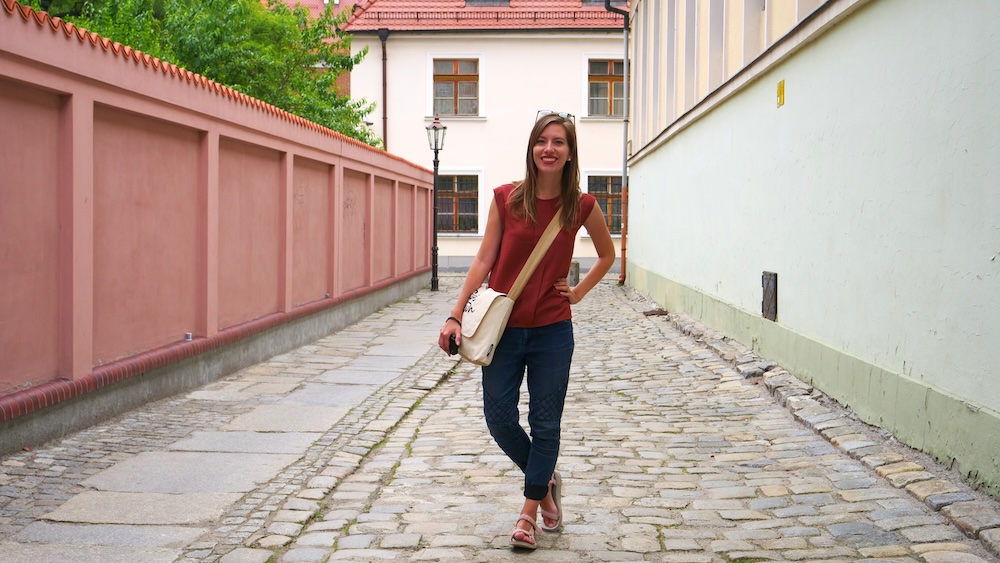
Exploring Cathedral Island (Ostrów Tumski)
Step into Wroclaw’s past with a visit to Cathedral Island (Ostrów Tumski), the oldest part of the city. This peaceful enclave, set on an island in the Oder River, is home to stunning religious architecture, including the magnificent Cathedral of St. John the Baptist. Wander through its quiet, cobbled streets lined with lampposts that are still lit by hand every evening, adding a romantic touch to this historic district. Don’t forget to cross the Tumski Bridge, adorned with thousands of love locks, symbolizing the enduring affection of couples who visit this charming corner of the city.
- Cathedral of St. John the Baptist: Marvel at the impressive Gothic structure, with its soaring towers offering panoramic views of the city.
- Tumski Bridge: Walk across this picturesque bridge, where couples leave love locks as a token of their enduring love.
- Evening Charm: Visit at dusk to experience the magic of the island as the gas lanterns are lit by a lamplighter—a unique tradition in Wroclaw.
Tip: Climb to the top of the cathedral’s tower for a breathtaking view of Wroclaw’s skyline, especially beautiful at sunset.
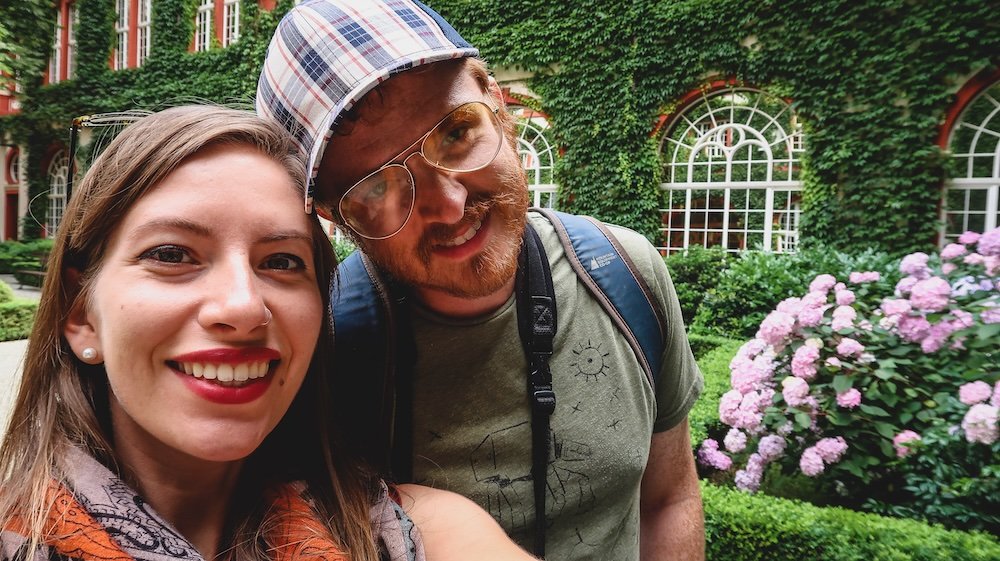
The University of Wroclaw and Its Baroque Splendor
The University of Wroclaw, founded in 1702, is not only an academic powerhouse but also a treasure trove of Baroque art and architecture. The highlight of the university complex is the Aula Leopoldina, an opulent ceremonial hall adorned with frescoes, sculptures, and gold accents. This grand space, named after the university’s founder, Emperor Leopold I, is considered one of the finest examples of Baroque interiors in Central Europe. While exploring the university grounds, don’t miss the Mathematical Tower. Here you can enjoy panoramic views of the city and learn about the university’s fascinating history.
- Aula Leopoldina: Step into a world of Baroque opulence, with stunning frescoes and sculptures that make this hall a true masterpiece.
- Mathematical Tower: Climb to the top for panoramic views and explore exhibits showcasing the university’s contributions to science and culture.
- Academic Legacy: Discover the rich history of the university and its role in shaping Wroclaw’s intellectual and cultural life.
Tip: Check the university’s schedule for concerts and events held in the Aula Leopoldina—a unique opportunity to experience this historic space in action.

Enjoying Wroclaw’s Green Spaces and Riverside Views
Wroclaw is a city that loves its green spaces. You’ll find numerous parks and gardens where you can relax and unwind. One of the most beautiful spots is the Botanical Garden, located near Cathedral Island, which features a stunning array of plants and flowers, peaceful ponds, and charming walkways. For a scenic stroll, head to the Oder River Promenade, where you can enjoy views of the river and the city’s iconic bridges. If you’re visiting in the warmer months, Szczytnicki Park is a lovely place to spend an afternoon, with its serene Japanese Garden and historic Centennial Hall.
- Botanical Garden: Wander through this lush oasis filled with a diverse collection of plants, perfect for a peaceful escape from the city bustle.
- Oder River Promenade: Enjoy a leisurely walk or bike ride along the river, taking in beautiful views of Wroclaw’s bridges and skyline.
- Szczytnicki Park: Explore one of the oldest parks in the city, home to the tranquil Japanese Garden and the impressive Centennial Hall.
Tip: Bring a picnic to Szczytnicki Park and relax by the pond in the Japanese Garden—a perfect spot for a serene afternoon.
Wroclaw offers a unique blend of old-world charm and modern energy. Pack your bags and prepare for an adventure in one of Poland’s most underrated cities.
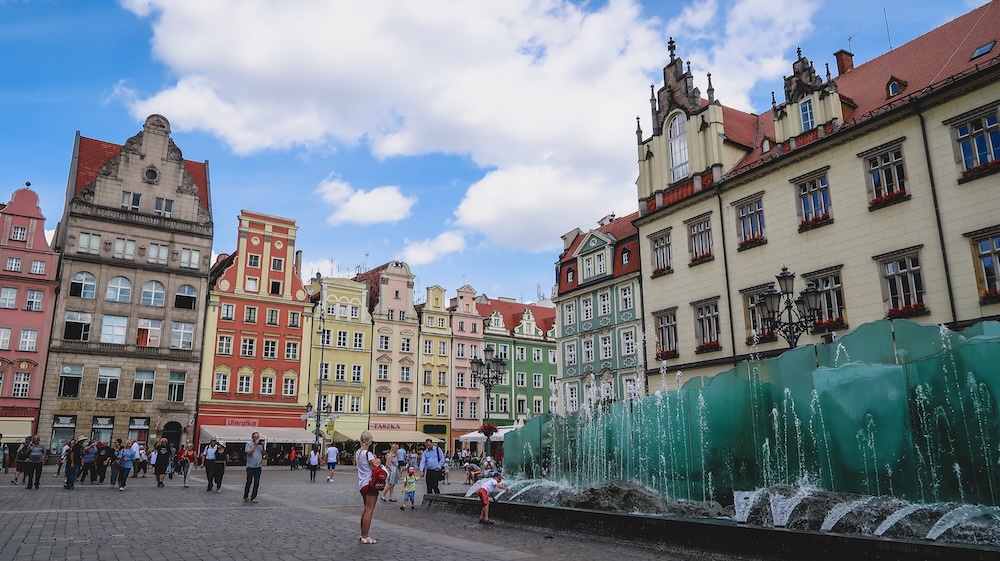
Wroclaw City Guide: A Brief History Of Wroclaw, Poland
Wroclaw has a rich and tumultuous history that spans over a thousand years. From its origins as a medieval trading settlement to its modern rebirth as a vibrant cultural hub, Wroclaw’s story is one of resilience and reinvention. Situated at the crossroads of Central Europe, it has been shaped by a diverse blend of influences and has endured countless changes of power. Today, Wroclaw is a city that wears its history proudly.

Early Beginnings and Medieval Growth
Wroclaw’s story begins in the 10th century, when it was founded as a Slavic settlement on the banks of the Oder River. It quickly grew into an important trading post due to its strategic location at the intersection of several trade routes. By the 13th century, the city had become a flourishing center of commerce, culture, and religion, with the establishment of the Wroclaw Cathedral on Ostrów Tumski, or Cathedral Island. The city’s medieval period laid the foundation for its architectural and cultural heritage, much of which can still be seen today.
- Strategic Location: Wroclaw’s position at the crossroads of major trade routes helped it grow into a prosperous medieval city.
- Cathedral Island: Ostrów Tumski, the oldest part of the city, became a religious and political center, marked by the construction of the grand Wroclaw Cathedral.
- Medieval Trade: The city’s thriving markets attracted merchants from all over Europe, making it a bustling hub of economic activity.
Tip: Explore the winding streets of Cathedral Island, where you can feel the echoes of Wroclaw’s medieval past in its ancient buildings and cobbled lanes.
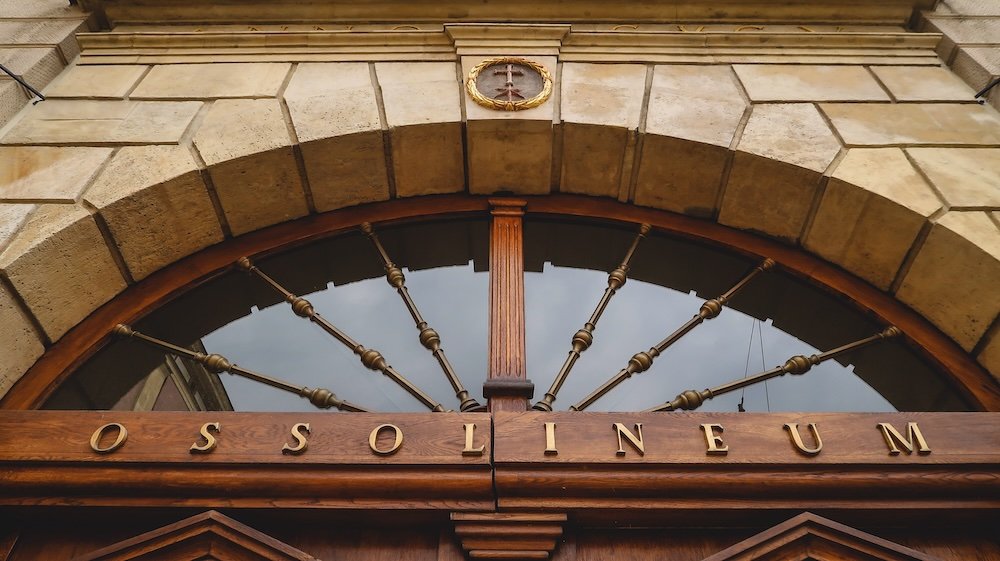
Habsburg and Prussian Rule
In the 16th century, Wroclaw, then known as Breslau, came under the control of the Habsburg Monarchy. During this period, the city experienced significant cultural and architectural development, with the construction of many Baroque buildings and the expansion of the University of Wroclaw. In 1741, it was annexed by Prussia and became part of the Kingdom of Prussia, marking the beginning of nearly two centuries of German influence. This era saw the modernization of the city’s infrastructure and the growth of its industrial base, transforming Wroclaw into a major urban center.
- Habsburg Influence: The city’s Baroque architecture and the founding of the University of Wroclaw reflect its cultural development under Habsburg rule.
- Prussian Era: Wroclaw became a key city in the Prussian kingdom, with significant investments in infrastructure and industry.
- Cultural Melting Pot: The city’s diverse population included Poles, Germans, Jews, and Czechs, contributing to its rich cultural fabric.
Tip: Visit the University of Wroclaw’s Aula Leopoldina to see one of the finest examples of Baroque architecture from this period.
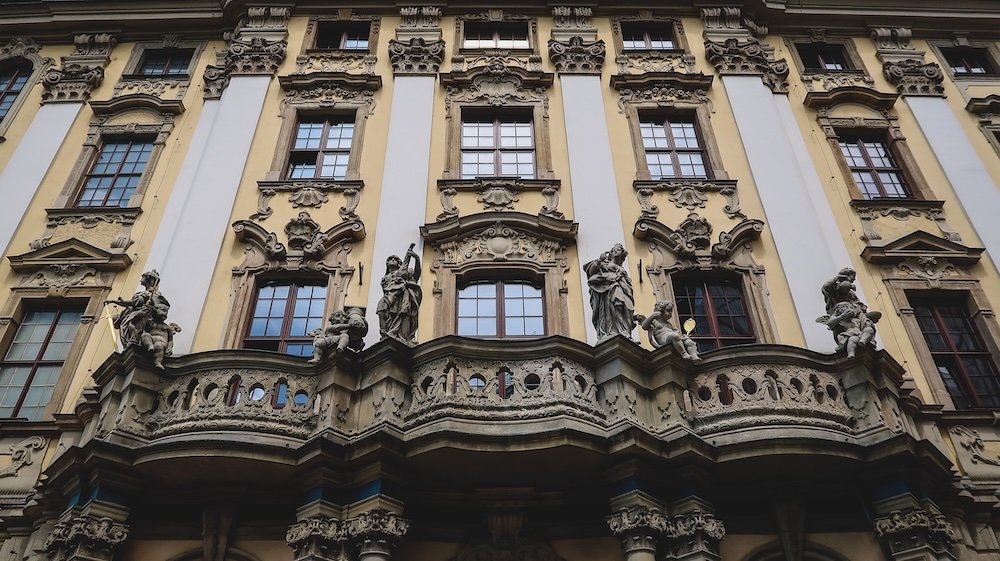
A City of Resilience: World War II and Aftermath
Wroclaw’s modern history is marked by profound upheaval and transformation, especially during and after World War II. As the war drew to a close, the city, then still called Breslau, was declared a fortress city by the Nazis and suffered extensive damage during a prolonged siege by the Soviet army. After the war, Wroclaw became part of Poland, and its German population was displaced, replaced by Polish citizens from the east. The city’s post-war period was one of recovery and rebuilding, as it sought to restore its cultural heritage and redefine its identity within the new borders of Poland.
- World War II Impact: The city was heavily bombed and besieged during the final months of the war, leaving much of it in ruins.
- Post-War Rebuilding: Wroclaw underwent extensive reconstruction, with efforts to restore its historic buildings and cultural institutions.
- New Beginnings: The city was repopulated with Polish citizens, many of whom were displaced from areas annexed by the Soviet Union, leading to a complex cultural transition.
Tip: For a deeper understanding of this period, visit the Panorama of the Battle of Raclawice, a unique art piece depicting a key moment in Polish history and symbolizing the city’s resilience.
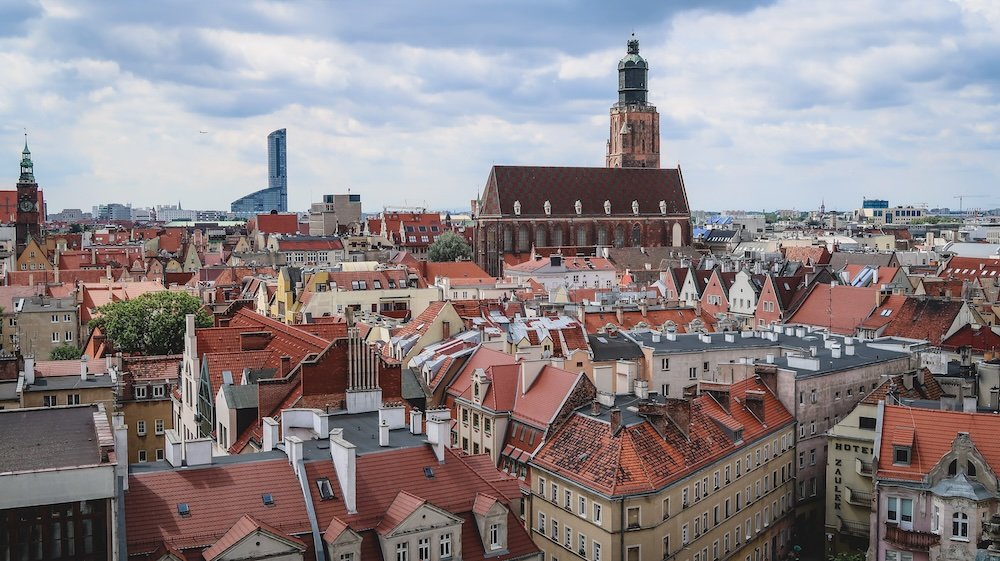
A Modern Renaissance
In recent decades, Wroclaw has experienced a remarkable renaissance, emerging as one of Poland’s most dynamic and forward-thinking cities. Designated as the European Capital of Culture in 2016, the city has embraced its multicultural heritage and vibrant arts scene. Today, Wroclaw is known for its thriving cultural life, innovative festivals, and a lively student population that brings youthful energy to its historic streets. It’s a city that seamlessly blends the past and the present, offering visitors a rich tapestry of experiences to explore.
- Cultural Hub: Wroclaw’s designation as the European Capital of Culture in 2016 highlighted its vibrant arts scene and diverse cultural offerings.
- Modern Developments: The city has invested in new infrastructure and public spaces, enhancing its appeal as a destination for both tourists and residents.
- Dynamic Atmosphere: A large student population and numerous cultural festivals create a lively, youthful vibe that permeates the city.
Tip: Don’t miss the chance to explore Wroclaw’s thriving cultural scene—check out the city’s many theaters, galleries, and festivals, especially the annual Wroclaw Contemporary Museum exhibitions.

Wroclaw Top Attractions and Best Places to Visit in Poland
Also known as Breslau, Wroclaw is a city with a complex past. As recently as 1945, it had been a German city. But in past centuries, it had been a Bohemian and Austrian possession as well. All this background has given Wroclaw a rich cultural background.
From its beautiful Old Town to its mischievous dwarfs, there is much to see and do here.
If you’re into churches, make the Cathedral of St. John the Baptist your first stop in Wroclaw. Christian churches have stood at this spot since the 10th century. However, a series of wars and fires brought them down no less than five times.
The Siege of Breslau in the Second World War razed 70% of the cathedral. However, by 1951, church authorities succeeded in reconstructing this treasured landmark. Within, you’ll find the largest pipe organ in Poland and a beautiful altar. For a fee, you can climb the bell tower, which offers great views of Wroclaw.
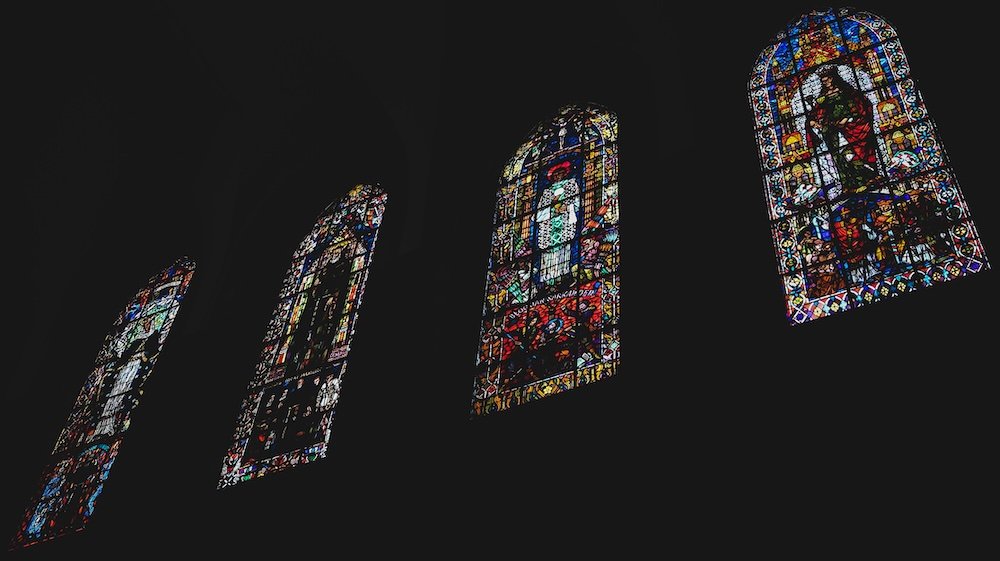
Other Attractions
Fans of the visual arts owe it to themselves to check out the Racławice Panorama. A giant canvas painting arranged inside a giant cylinder, it’s Jan Styka homage to the Battle of Raclawice. Waged against the Russians in the late 18th century, it was a reminder of a time the Polish had stood strong against foreign invaders.
This piece was a massive undertaking, as it stands 15 metres tall by 114 metres long. It shows the battle, set against a dramatically beautiful depiction of the Polish countryside. To get the full story behind the battle and the artist, pick up an audio guide at the reception desk.
The 1980s were paranoid times on the streets of Wroclaw. Unveiled by artist Jerzy Kalina, The Passage remembers how secret police disappeared citizens suspected of opposing the government. These bronze figures sink into the pavement, only to reappear on the other side of the street. All in all, it’s a sobering reminder of the dangers of authoritarianism.
While in the Old Town, be sure to stop by Wroclaw Town Hall. Built in the 13th century, this Gothic masterpiece is a favourite of both local and visiting photographers.
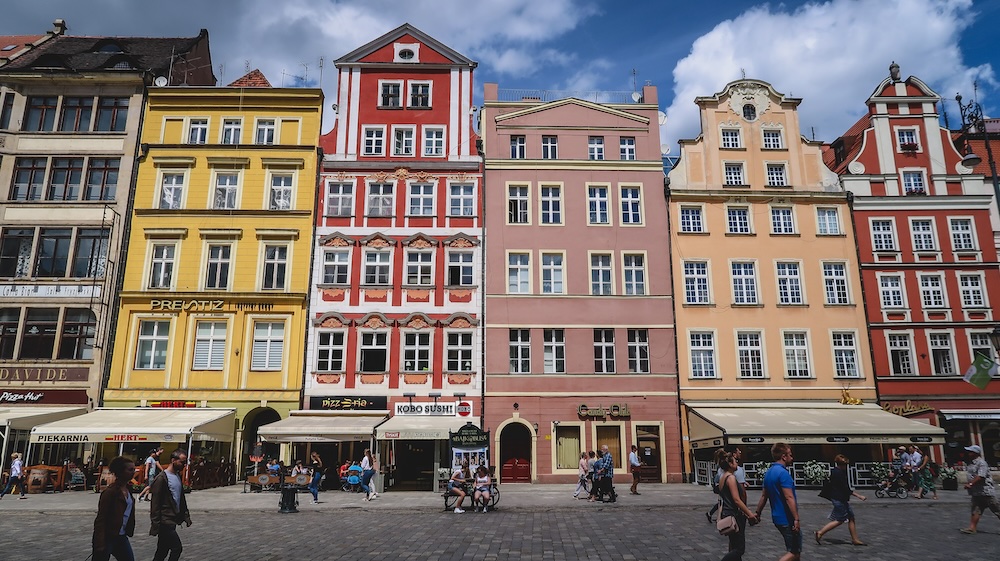
Other Cultural Attractions: Trip to Wroclaw, Poland
As you sightsee, you’ll pick up on a pattern. Eventually, you’ll notice statues of gnomes – these are The Dwarfs of Wroclaw. Local authorities initially placed them to mark the meeting places of the Orange Alternative, Wroclaw’s anti-communist movement.
Recently though, they’ve become a fun aspect of this city. Today, you can find dozens of these lighthearted statues throughout the Old Town. If you wish, you can pick up maps from the local tourist office and hunt them all down.
If you’re travelling around Poland as a family, Wroclaw offers a pair of cool kid-friendly attractions. Kolejkowo is the first of these – located inside the Świebodzki Railway Station, you’ll find an amazing world of miniature trains here.

More Attractions
This massive display pays homage to railways and the city of Wroclaw on a miniature scale. In all, this attraction contains 27 trains and over one kilometre of track. Don’t worry about closures – this spot is open 365 days a year from 10 am to 6 pm. Admission is no more than 5 EUR for adults and 3.50 EUR per person for groups.
If you need another attraction to keep the kids entertained, take them to the Wroclaw Zoo. Since the mid-19th-century, this landmark has brought the world’s fauna to the locals. Here, you’ll find over 10,000 animals from more than 1,100 species.
While it has animals from all over the world, its African collection is especially detailed. With 33 hectares of space, plan on spending a good part of your day here.
End your stay by spending an evening in the Rynek of Wroclaw. Also known as Market Square, it is home to the city’s Christmas Market during the holiday season. In summer, take a seat in a sidewalk bar and watch street performers do their thing.

Top 20 Things To Do in Wroclaw, Poland For Visitors
Here’s a guide to some must-see attractions and experiences that will make your visit truly unforgettable.

1. University Quarter of the Old Town (Uniwersytet Wrocławski / Universität Breslau)
The University Quarter is a historic gem in the heart of Wroclaw, home to the prestigious University of Wroclaw, which dates back to 1702. The beautiful Baroque architecture of the university buildings, including the stunning Aula Leopoldina, is a testament to the city’s rich academic heritage. Stroll through the cobblestone streets, lined with historic facades and shaded by leafy trees, and feel the intellectual spirit that has thrived here for centuries. Don’t miss the chance to explore the vibrant student atmosphere, with cozy cafes and lively bookshops adding to the area’s charm.
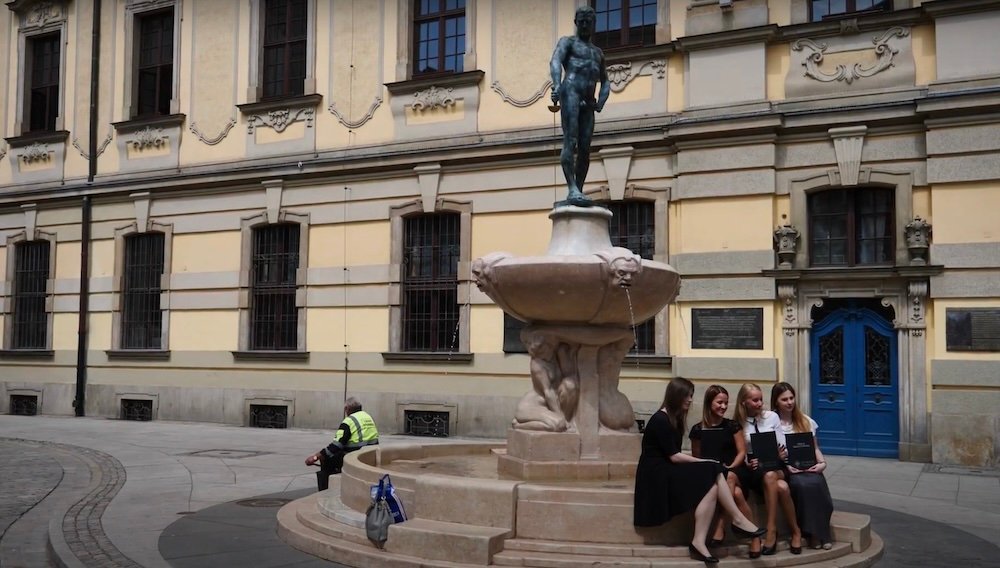
- Aula Leopoldina: Step inside this magnificent Baroque hall, adorned with intricate frescoes and gilded sculptures—a true masterpiece of academic architecture.
- University Museum: Learn about the history of the university and its contributions to science and culture over the centuries.
- Art Exhibitions: Check out temporary art exhibitions held within the university, showcasing both historical collections and contemporary works.
Tip: Take a guided tour of the university to fully appreciate the history and beauty of this academic powerhouse.
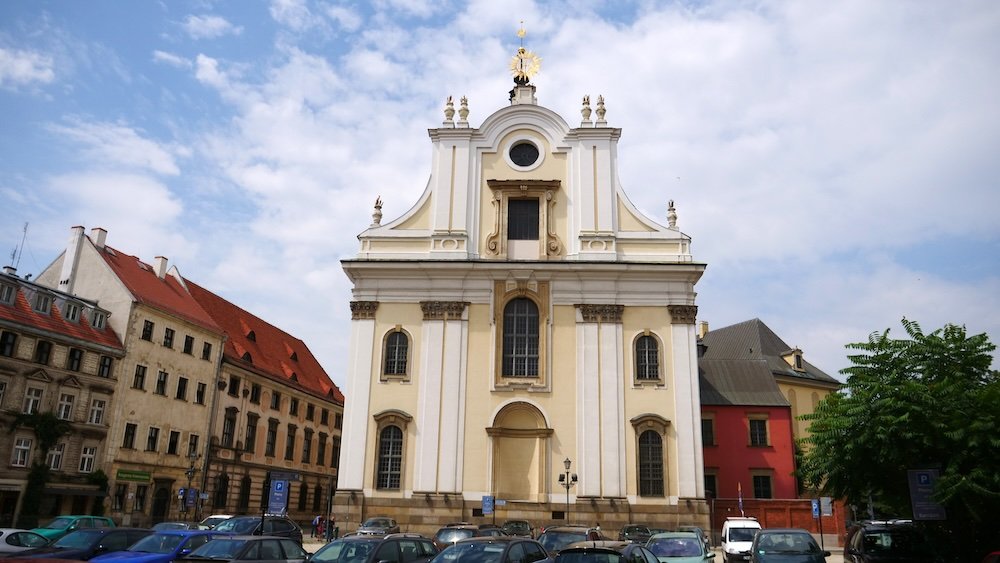
2. Chapel (Parish of the Most Holy Name of Jesus – Kościół – Uniwersytecki p.w. Najświętszego Imienia Jezus)
Adjacent to the university is the Parish of the Most Holy Name of Jesus, a Baroque chapel often considered one of the most beautiful in Poland. Its stunning interior features lavish stuccoes, ornate altars, and an intricately painted ceiling that tells the story of the church’s founding. The peaceful ambiance and exquisite artistry make it a perfect spot for quiet reflection or a moment of awe. As you sit in the pews, take in the craftsmanship and detail that reflect the chapel’s historical and spiritual significance.
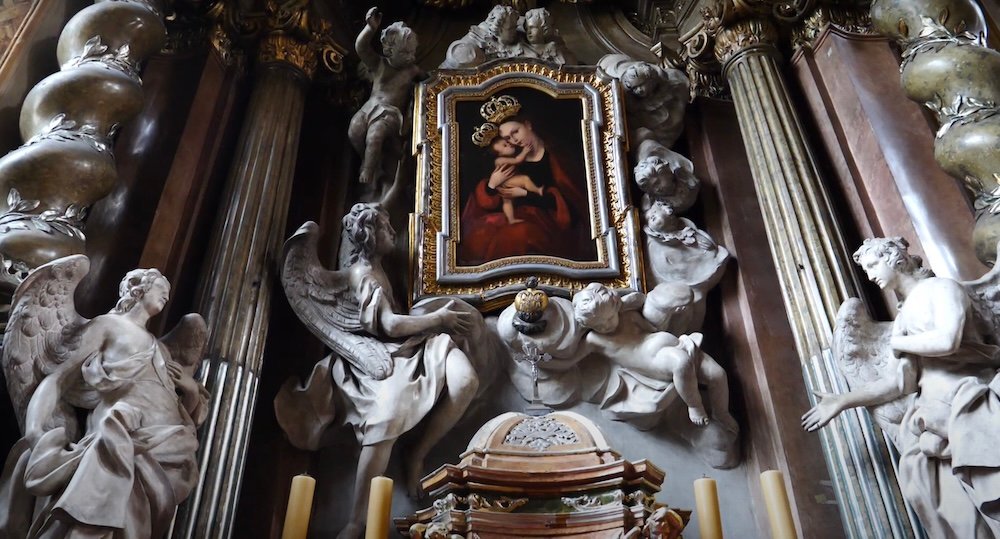
- Baroque Artistry: Marvel at the chapel’s opulent decor, including gilded altars and richly detailed frescoes.
- Spiritual Atmosphere: Enjoy a moment of tranquility in this serene space, which remains a functioning place of worship.
- Guided Visits: Learn about the history and symbolism of the chapel’s artwork and architecture from knowledgeable guides.
Tip: Visit during a weekday morning to avoid the crowds and enjoy the chapel’s peaceful atmosphere at its best.
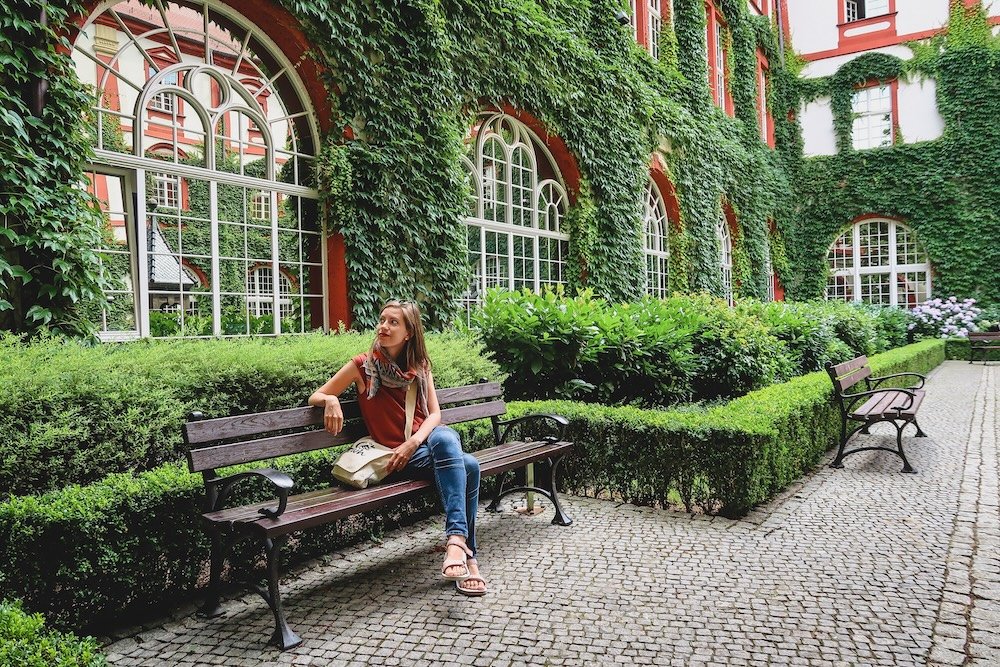
3. Ossolineum (Zakład Narodowy im. Ossolińskich)
The Ossolineum is one of Poland’s most important cultural institutions, housing a vast collection of rare books, manuscripts, and artworks. Founded in 1817, this institution has played a crucial role in preserving Polish heritage through turbulent times. Wander through the beautiful Baroque palace that now serves as the Ossolineum’s home, and explore its fascinating exhibitions that delve into Poland’s literary and cultural history. It’s a must-visit for anyone interested in the intellectual and cultural legacy of Wroclaw.
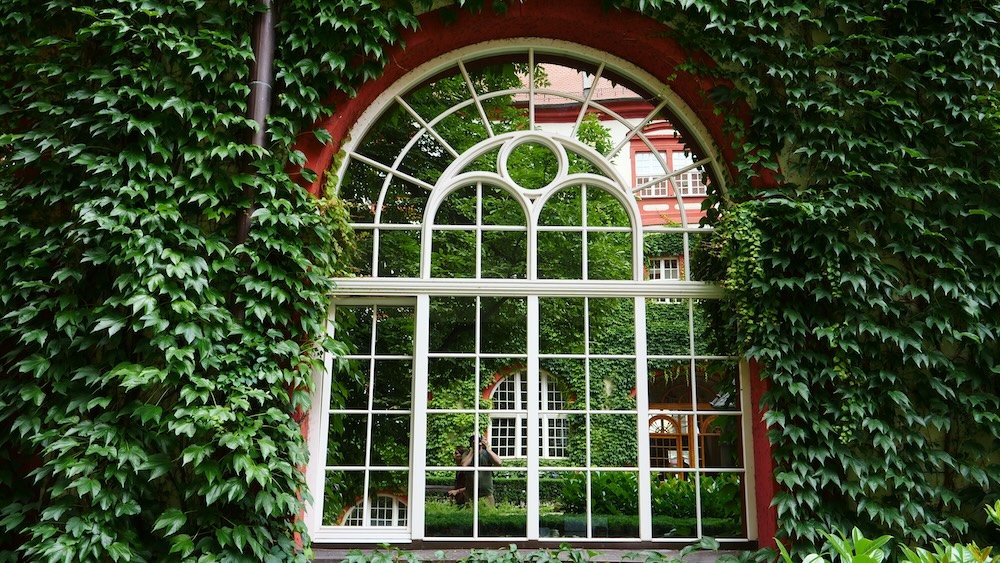
- Rare Manuscripts: View a remarkable collection of Polish literary works and historical documents, some dating back centuries.
- Art Gallery: Admire works by prominent Polish artists, with exhibitions that rotate throughout the year.
- Library: Explore the reading rooms and experience the scholarly atmosphere of this venerable institution.
Tip: Check the Ossolineum’s event calendar for lectures, exhibitions, and special tours that offer deeper insights into Polish culture and history.
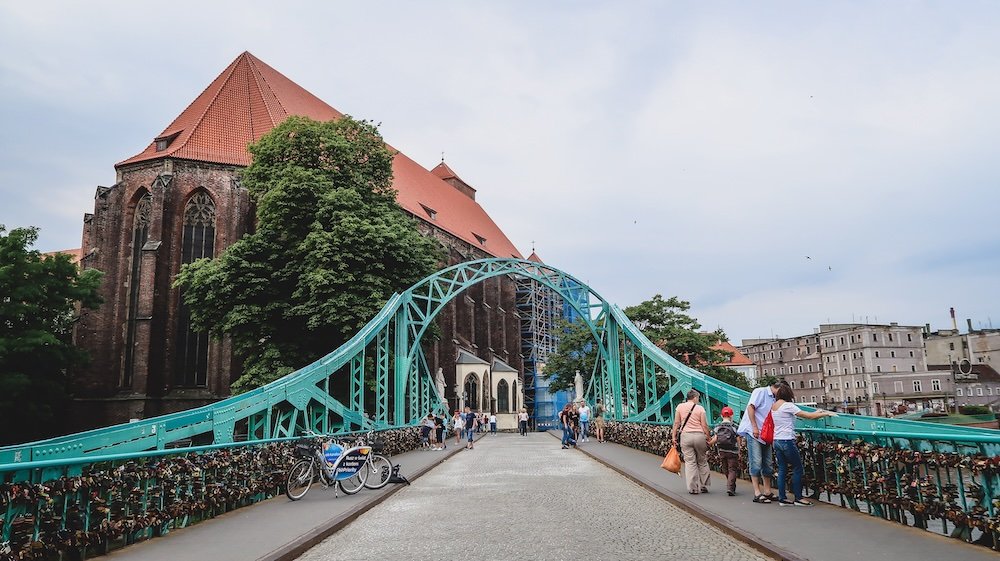
4. Cathedral Island (Ostrów Tumski – Dominsel)
Cathedral Island is the oldest part of Wroclaw, offering a serene escape from the bustling city. As you cross the Tumski Bridge, adorned with love locks, you’ll enter a world of cobbled streets, historical buildings, and peaceful gardens. The highlight is the magnificent Wroclaw Cathedral, with its twin spires visible from across the city. Climb to the top for panoramic views, or simply wander through the quiet lanes and admire the beautiful churches and charming gas lamps that are still lit by hand every evening.

- Wroclaw Cathedral: Explore this stunning Gothic cathedral, with its beautiful stained-glass windows and richly decorated chapels.
- Botanical Garden: Enjoy a peaceful stroll through this lush garden, filled with a diverse array of plants and flowers.
- Archbishop’s Palace: Visit this historic building, now a museum, to learn about the religious history of the region.
Tip: Visit in the evening to see the gas lamps being lit—a unique and atmospheric tradition that adds to the island’s magical charm.
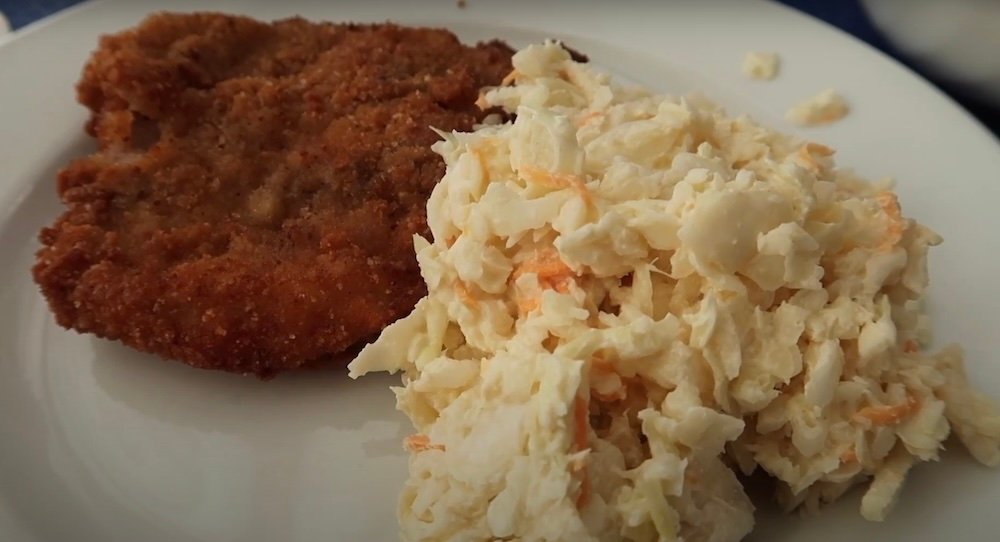
5. Milk Bar (Bar mleczny)
A visit to a milk bar is a quintessential Polish experience that offers a taste of traditional home-cooked food at incredibly affordable prices. These communist-era cafeterias serve simple, hearty dishes like pierogi, kopytka (potato dumplings), and barszcz (beet soup) in a no-frills setting. The menus, usually displayed on chalkboards, are packed with Polish favorites that are perfect for a quick, satisfying meal. It’s a great way to enjoy authentic Polish cuisine and immerse yourself in a piece of the country’s cultural history.
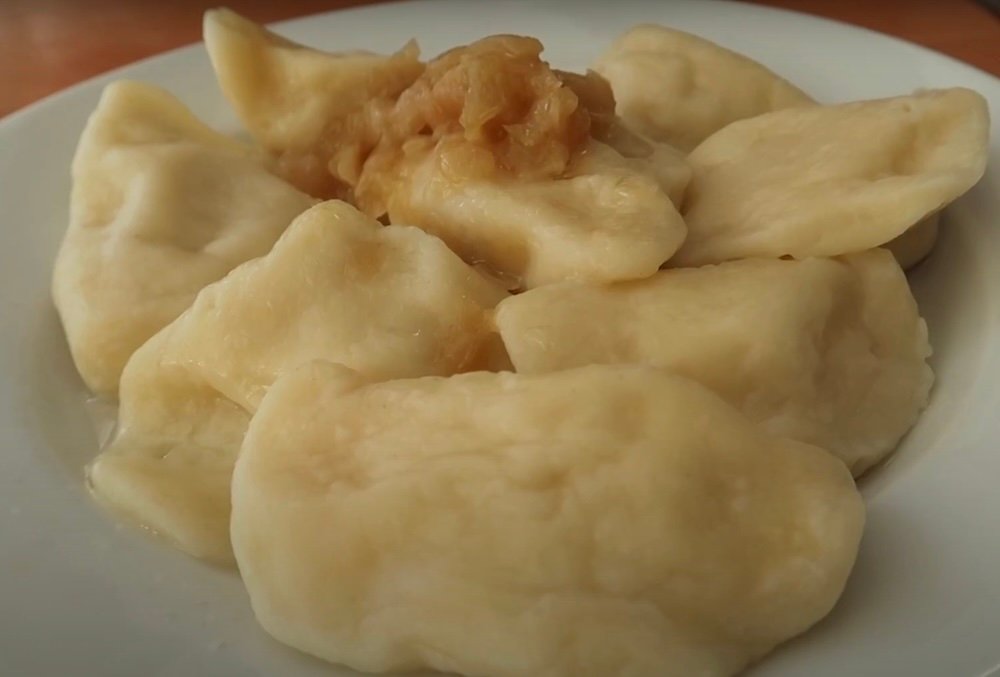
- Pierogi: Try these classic Polish dumplings filled with potato and cheese, meat, or mushrooms and cabbage.
- Kopytka: These soft potato dumplings, often served with a rich sauce or crispy bacon, are a comforting delight.
- Barszcz: A traditional beet soup, served hot with a dollop of sour cream or cold in the summertime as a refreshing starter.
Tip: Don’t be afraid to try new dishes—most milk bars have menus in English or staff who can help you choose if you’re not sure what to order.
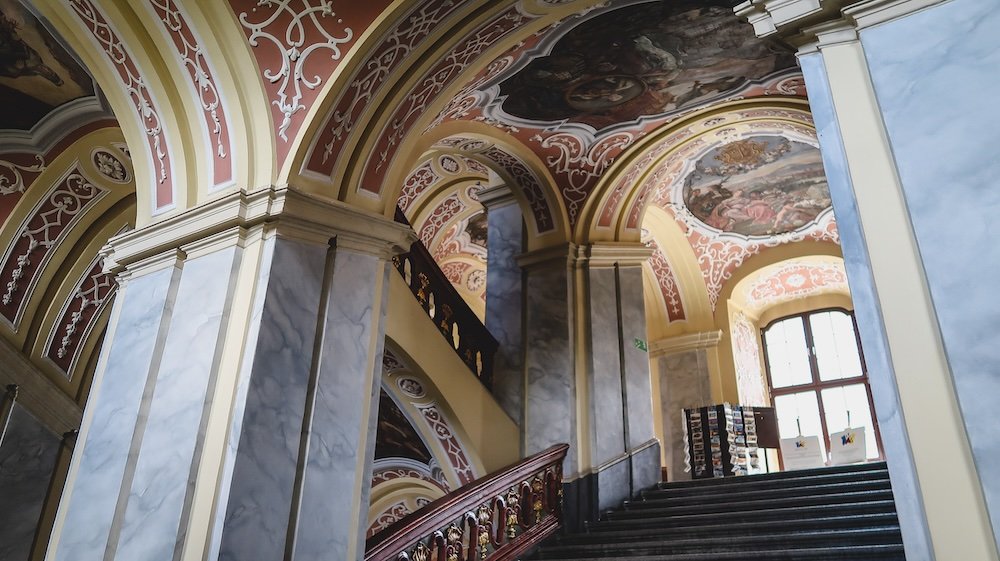
6. Mathematical Tower Of Wroclaw University for Views of the City
For a bird’s-eye view of Wroclaw, head up to the Mathematical Tower of Wroclaw University. This 42-meter-high tower offers panoramic views of the city’s rooftops, spires, and bridges, as well as the surrounding Oder River and the picturesque Old Town. The tower itself is part of the university’s museum, where you can learn about the history of science and mathematics at the institution. It’s a rewarding climb that provides a unique perspective on the city and its academic heritage.
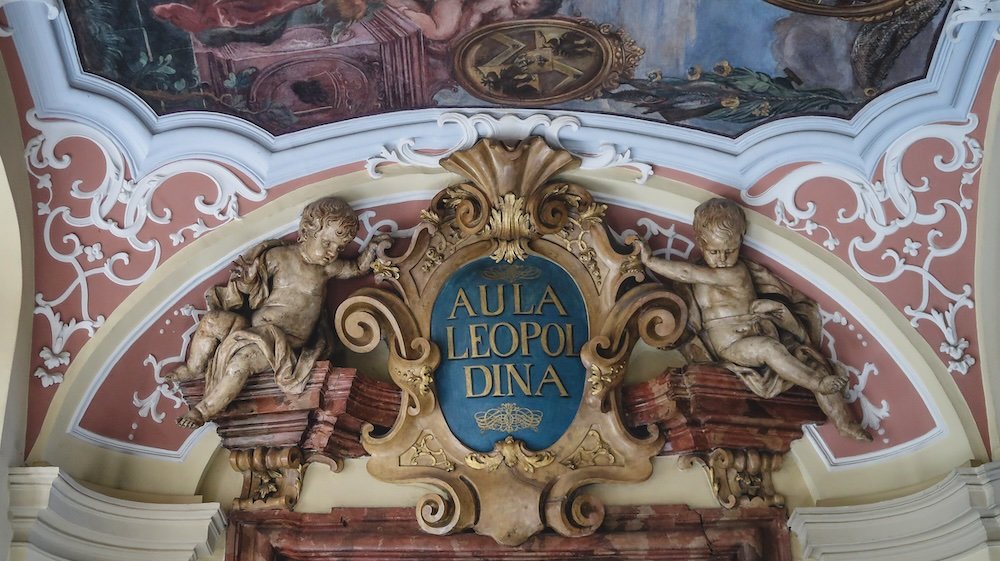
- Panoramic Views: Enjoy stunning vistas of Wroclaw’s skyline, including the historic Old Town and the university’s beautiful Baroque buildings.
- University Museum: Explore the exhibits on the university’s contributions to science, including fascinating historical instruments.
- Astronomy Enthusiasts: Check out the small observatory at the top of the tower, used for stargazing and astronomical research.
Tip: Visit on a clear day for the best views—bring a camera, as the sight of Wroclaw from above is truly breathtaking.

7. Metal Arch Sculpture
Located near the Centennial Hall, the Metal Arch Sculpture is a striking piece of modern art that stands as a symbol of innovation and resilience. The sculpture, known as The Needle (Iglica), was originally erected in 1948 as part of the Exhibition of the Recovered Territories. It reaches a height of 96 meters and is made from metal segments welded together in a dramatic, soaring form. It’s a powerful and thought-provoking monument that contrasts sharply with the historic architecture of the surrounding area.

- Photogenic Spot: The arch’s unique shape and metallic sheen make it a great subject for photography, especially against the backdrop of a clear sky.
- Centennial Hall: Combine your visit with a tour of the nearby UNESCO-listed Centennial Hall, a masterpiece of modernist architecture.
- Fountain Show: Time your visit to see the multimedia fountain show at the nearby Wroclaw Fountain, a spectacular display of water, light, and music.
Tip: Visit at sunset to see the sculpture bathed in the soft evening light—it’s an inspiring sight that highlights the artistic spirit of Wroclaw.

8. Boat Cruise along the River Oder (Odra)
A boat cruise along the River Oder is one of the best ways to see Wroclaw’s stunning architecture and picturesque landscapes from a different perspective. Glide past iconic landmarks such as the University of Wroclaw, the Cathedral Island, and the beautiful bridges that span the river. Choose from a variety of cruises, including traditional wooden boats, modern glass-roofed vessels, or romantic evening rides with dinner included. It’s a relaxing and scenic experience that offers a new appreciation for the city’s unique charm.

- City Landmarks: Enjoy views of Wroclaw’s most famous sights, including the university, the cathedral, and the charming Old Town.
- Nature and Wildlife: Spot local wildlife, such as swans and ducks, as you float along the tranquil waters of the Oder.
- Sunset Cruises: Opt for an evening cruise to see the city lights reflecting on the water—a magical experience that’s perfect for couples.
Tip: Bring a light jacket, even in summer—it can get breezy on the water, especially in the evening.
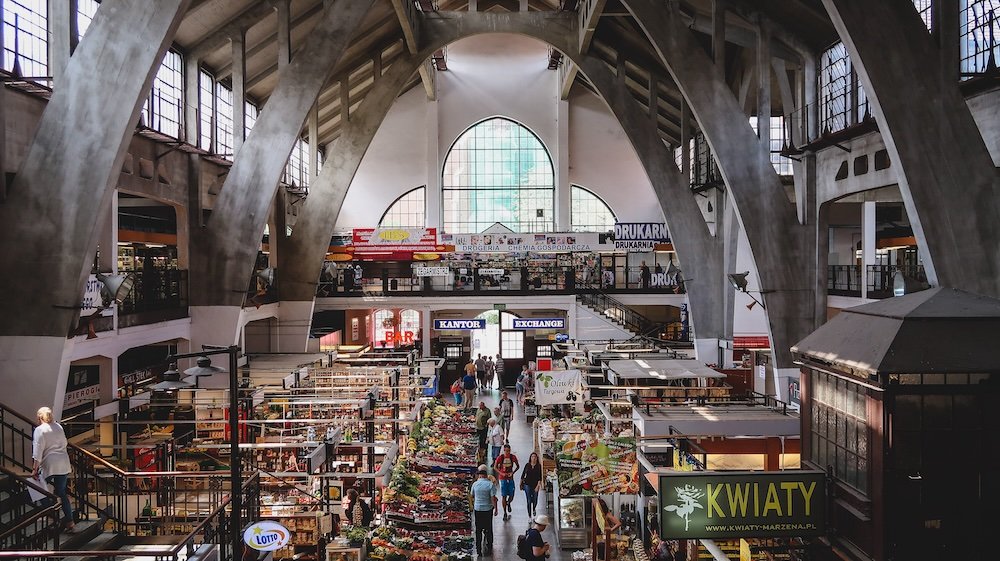
9. Wrocław Market Hall (Hala Targowa we Wrocławiu – Breslauer Markthalle)
For a true taste of local life, head to the Wrocław Market Hall, a bustling indoor market that has been serving the city since 1908. Inside this impressive early 20th-century building, you’ll find a vibrant mix of vendors selling fresh produce, meats, cheeses, flowers, and handmade crafts. It’s a sensory feast, with the aroma of freshly baked bread, the vibrant colors of seasonal fruits and vegetables, and the lively chatter of locals going about their shopping. It’s a perfect spot to pick up some local delicacies or just soak up the authentic atmosphere.
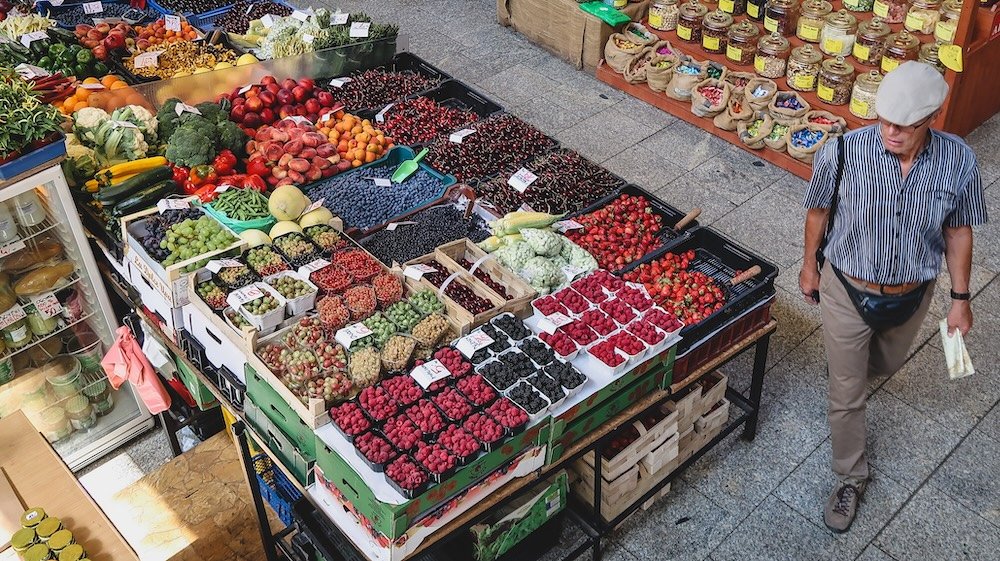
- Fresh Produce: Sample a wide variety of seasonal fruits and vegetables, as well as locally produced cheeses and meats.
- Polish Specialties: Try traditional Polish foods like pierogi, smoked sausages, and fresh-baked pastries from the market’s many food stalls.
- Crafts and Gifts: Browse the selection of handmade crafts, from traditional pottery to unique jewelry and textiles.
Tip: Visit in the morning for the freshest produce and the best selection, and don’t be shy about chatting with the vendors—they’re often happy to share their knowledge and offer samples.

10. Market Town Square, Wrocław (Rynek we Wrocławiu – Großer Ring zu Breslau)
The Market Town Square is the vibrant heart of Wroclaw, a bustling hub of activity surrounded by stunning historic buildings. This expansive square is one of the largest in Europe and features a fascinating mix of Gothic, Renaissance, and Baroque architecture. At its center stands the beautiful Wroclaw Town Hall, a masterpiece of Gothic architecture that now houses the city museum. The square is lined with cafes, restaurants, and shops, making it a perfect spot to relax and soak up the lively atmosphere. Whether you’re exploring the colorful facades, enjoying a coffee, or taking in a street performance, the Rynek is a place you’ll want to return to again and again.
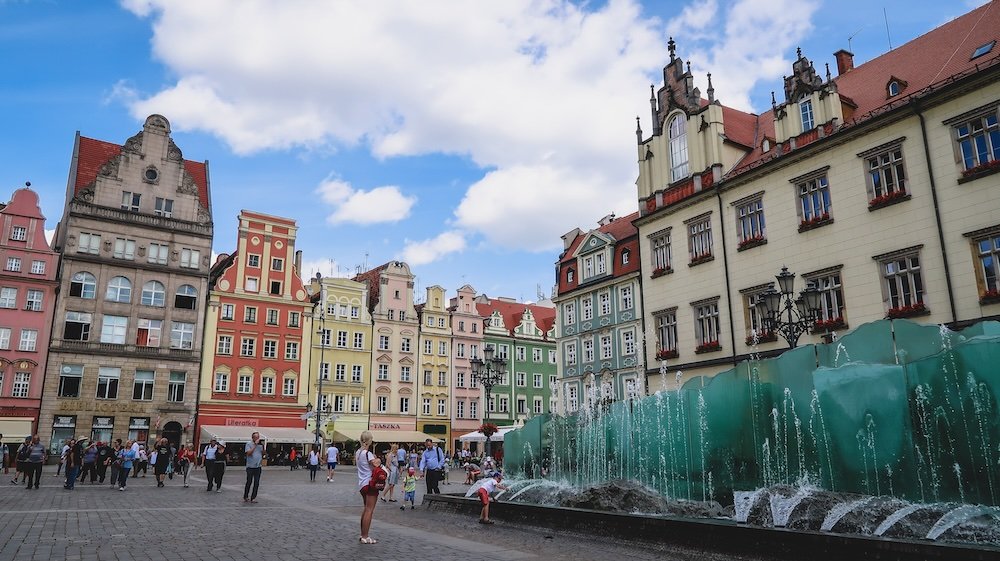
- Wroclaw Town Hall: Visit this stunning building and explore its museum, which offers insights into the city’s rich history and culture.
- Astronomical Clock: Don’t miss the chance to see the unique astronomical clock on the Town Hall’s facade, a beautiful example of medieval craftsmanship.
- Street Performers: Enjoy the vibrant energy of the square, with musicians, artists, and performers adding to the lively ambiance.
Tip: Visit the Rynek at night when the buildings are beautifully illuminated, creating a magical atmosphere that’s perfect for an evening stroll or a romantic dinner.
These are the 10 things we did while visiting Wroclaw, Poland! Here are 10 more suggestions of things to do if you’re visiting the city!
11. Hydropolis: A Museum Dedicated to Water
Hydropolis is an innovative and interactive museum that delves into the fascinating world of water. Housed in a beautifully restored 19th-century water tower, this unique museum combines cutting-edge technology and stunning visual displays to explore the importance of water in our world. From the origins of water on Earth to its role in sustaining life and shaping civilizations, Hydropolis offers an immersive experience that’s both educational and captivating. It’s a perfect outing for families, science enthusiasts, or anyone curious about the wonders of our planet’s most precious resource.
- Interactive Exhibits: Engage with hands-on displays that explain the science of water in a fun and accessible way.
- Multimedia Presentations: Enjoy stunning visuals and multimedia presentations that explore the mysteries of the ocean, the water cycle, and more.
- History of Wroclaw’s Waterworks: Learn about the city’s historical relationship with water and its impressive water supply system.
Tip: Book your tickets online in advance to secure your spot, especially during weekends and holidays, as this popular attraction can get busy.
12. Japanese Garden (Ogród Japoński)
Escape the hustle and bustle of the city and immerse yourself in the serene beauty of the Japanese Garden, located within Szczytnicki Park. Originally created for the 1913 World Expo, this meticulously maintained garden offers a tranquil space for relaxation and reflection. Wander along winding paths lined with cherry trees, cross charming wooden bridges over koi-filled ponds, and admire the delicate beauty of traditional Japanese architecture and landscaping. It’s a perfect spot to unwind and reconnect with nature, right in the heart of Wroclaw.
- Traditional Design: The garden features authentic Japanese elements, including stone lanterns, a teahouse, and carefully arranged rock gardens.
- Seasonal Beauty: Visit in spring to see the cherry blossoms in full bloom, or in autumn when the foliage turns vibrant shades of red and gold.
- Photography Opportunities: The garden’s picturesque scenery makes it a favorite spot for photographers, especially during sunrise and sunset.
Tip: Visit early in the morning or late in the afternoon to avoid the crowds and enjoy the peaceful ambiance at its best.
13. Wroclaw Contemporary Museum (Muzeum Współczesne Wrocław)
For a taste of modern art and culture, head to the Wroclaw Contemporary Museum, housed in a converted anti-aircraft bunker. This striking venue offers a dynamic program of temporary exhibitions, showcasing works by contemporary Polish and international artists across various media, including painting, sculpture, photography, and video installations. The museum also hosts workshops, film screenings, and discussions, making it a lively hub for creative exchange. After exploring the exhibits, don’t miss the rooftop cafe, which offers panoramic views of the city and a relaxing space to unwind.
- Diverse Exhibitions: Explore a rotating selection of contemporary art exhibitions that reflect current trends and themes in the art world.
- Rooftop Cafe: Enjoy a coffee or a snack with a view, as the museum’s rooftop terrace offers a fantastic vantage point over Wroclaw.
- Cultural Events: Check the museum’s calendar for special events, including artist talks, screenings, and workshops.
Tip: Admission is free on Thursdays, making it an ideal time to explore the museum without breaking the bank.
14. Four Denominations District (Dzielnica Czterech Świątyń)
The Four Denominations District, also known as the Quarter of Mutual Respect, is a unique area in Wroclaw that highlights the city’s rich multicultural heritage. Within just a few blocks, you’ll find four different places of worship—a Catholic church, an Orthodox church, a Protestant church, and a synagogue—each representing a different faith community. This district is a powerful symbol of tolerance and coexistence, and it offers a fascinating glimpse into the diverse cultural fabric of Wroclaw. Wander the streets, visit the historic buildings, and reflect on the spirit of unity that defines this special part of the city.
- St. Anthony of Padua Church: A beautiful Catholic church known for its impressive Baroque architecture and peaceful interior.
- White Stork Synagogue: Visit this beautifully restored synagogue, which serves as both a place of worship and a cultural center.
- Orthodox Church of St. Cyril and Methodius: Admire the striking iconostasis and intricate mosaics inside this stunning Orthodox church.
Tip: Plan your visit during one of the district’s cultural festivals, such as the Night of the Temples, to experience the vibrant atmosphere and learn more about the community’s history.
15. Panorama of the Battle of Raclawice (Panorama Racławicka)
The Panorama of the Battle of Raclawice is an extraordinary artistic achievement and one of Wroclaw’s most iconic attractions. This massive 114-meter-long painting depicts the historic 1794 Battle of Raclawice, where Polish forces led by Tadeusz Kosciuszko fought against the Russian army. The panoramic painting is displayed in a purpose-built rotunda, creating an immersive experience that transports visitors to the battlefield. With its incredible detail and lifelike perspective, the Panorama is a must-see for history enthusiasts and art lovers alike.
- Immersive Experience: The circular format of the painting, combined with carefully arranged foreground elements, creates a stunning 3D effect that draws viewers into the scene.
- Historical Context: Learn about the significance of the Battle of Raclawice and its place in Polish history through the informative audio guide provided with your visit.
- Artistic Mastery: Admire the skill and creativity of the artists who collaborated to create this monumental work in the late 19th century.
Tip: Arrive early to secure your spot, as entry is timed and tickets can sell out quickly, especially during peak tourist season.
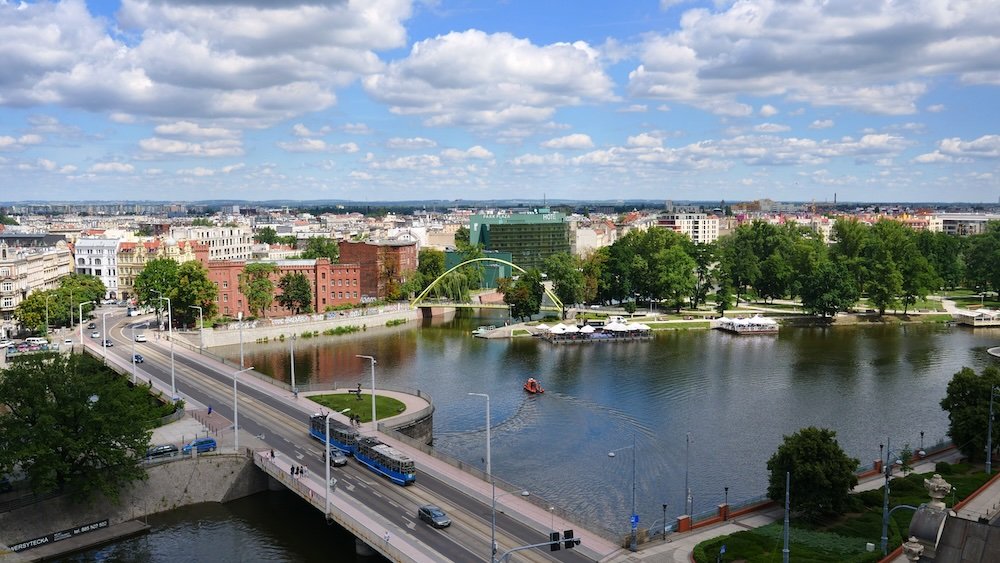
16. Sky Tower: A View from the Top
For a modern contrast to Wroclaw’s historic sites, head to the Sky Tower, the tallest building in the city. The 49th-floor observation deck offers breathtaking views over Wroclaw and the surrounding region, providing a unique perspective on the city’s layout and landmarks. The Sky Tower complex also features a shopping mall, restaurants, and even an indoor golf simulator, making it a versatile destination for a range of activities. Whether you’re looking to do some shopping, grab a bite to eat, or simply enjoy the panoramic views, Sky Tower is well worth a visit.
- Observation Deck: Take in stunning 360-degree views from the 49th floor, where you can spot all of Wroclaw’s major landmarks.
- Shopping and Dining: Browse a variety of shops or enjoy a meal at one of the many restaurants and cafes in the Sky Tower complex.
- Entertainment Options: Try your hand at the indoor golf simulator or catch a movie at the on-site cinema.
Tip: Visit the observation deck at sunset for spectacular views as the city lights up below you—a perfect end to a day of sightseeing.
17. Centennial Hall and Wroclaw Fountain
A UNESCO World Heritage site, Centennial Hall is a masterpiece of early modernist architecture, designed by Max Berg and completed in 1913. The hall is an impressive example of reinforced concrete construction and remains a significant cultural and events venue in Wroclaw. Just outside the hall, you’ll find the Wroclaw Fountain, one of the largest multimedia fountains in Europe. The fountain’s choreographed displays of water, light, and music are a mesmerizing spectacle, especially during the evening shows. It’s a great spot to relax and enjoy the blend of history, art, and modern entertainment.
- Architectural Marvel: Explore the unique design and construction of the Centennial Hall, a pioneering achievement in architectural history.
- Fountain Show: Enjoy a dazzling display of water jets, lights, and music at the Wroclaw Fountain, with themed shows scheduled throughout the day.
- Pergola Gardens: Stroll through the beautiful pergola surrounding the fountain, a peaceful spot for a leisurely walk or a picnic.
Tip: Check the schedule for special evening shows at the fountain, featuring spectacular light and music performances that are not to be missed.
18. Museum of Architecture (Muzeum Architektury)
Housed in a former monastery, the Museum of Architecture is a fascinating destination for anyone interested in the history and design of buildings. The museum’s exhibitions cover a wide range of topics, from medieval church architecture to modern urban planning, with a focus on Polish and European architectural heritage. The building itself, with its Gothic cloisters and beautiful inner courtyard, is a perfect setting for exploring the art and science of architecture. It’s a wonderful place to gain a deeper understanding of Wroclaw’s architectural landscape and its place within the broader European context.
- Permanent Exhibitions: Discover the evolution of architectural styles through a variety of models, drawings, and photographs.
- Temporary Exhibits: Enjoy rotating exhibitions that highlight specific architects, architectural movements, and design innovations.
- Interactive Displays: Engage with hands-on exhibits that explore the principles of design and construction.
Tip: Take a walk around the museum’s peaceful courtyard, a hidden gem that offers a quiet escape in the middle of the city.
19. Neon Side Gallery
For a burst of color and nostalgia, head to the Neon Side Gallery, an open-air museum dedicated to preserving the vibrant neon signs that once lit up Poland’s urban landscapes. Tucked away in a courtyard in the Ruska 46 Passage, this eclectic collection of neon lights offers a glimpse into the country’s post-war history and the art of signage. The glowing letters and shapes, salvaged from old shops, theaters, and cafes, create a surreal and retro atmosphere that’s perfect for an evening stroll. It’s a favorite spot for photographers and Instagram enthusiasts alike.
- Neon Art: Admire the diverse collection of neon signs, each with its own unique design and story, representing a bygone era of Polish advertising.
- Urban Vibes: Enjoy the funky, urban atmosphere of the Ruska 46 Passage, which is also home to independent galleries, studios, and cafes.
- Great for Photos: The vibrant colors and quirky designs make for some fantastic photo opportunities, especially after dark when the signs are illuminated.
Tip: Visit in the evening when the neons are lit up for the best experience, and don’t forget to explore the nearby bars and art spaces in the Passage.
20. Kolejkowo Miniature World
Step into a tiny, whimsical world at Kolejkowo, one of Poland’s largest model railway exhibitions. Located in the historic Świebodzki Railway Station, Kolejkowo features intricate, hand-crafted models of Wroclaw’s landmarks, including the Market Square and the Sky Tower, as well as charming rural scenes and bustling towns. Watch as tiny trains chug through detailed landscapes, complete with miniature people going about their daily lives. It’s a delightful attraction for visitors of all ages and offers a playful, miniature take on the city’s real-life scenery.
- Miniature Wroclaw: See some of the city’s most iconic landmarks, meticulously recreated in miniature form, down to the smallest detail.
- Interactive Elements: Press buttons to bring parts of the display to life, from moving trains to working lights and animated figures.
- Seasonal Scenes: Enjoy special seasonal displays, like a snowy winter wonderland or a festive Christmas village, adding a touch of magic to the experience.
Tip: Take your time exploring the exhibition—there are so many tiny details to discover that you could easily spend an hour or more here.
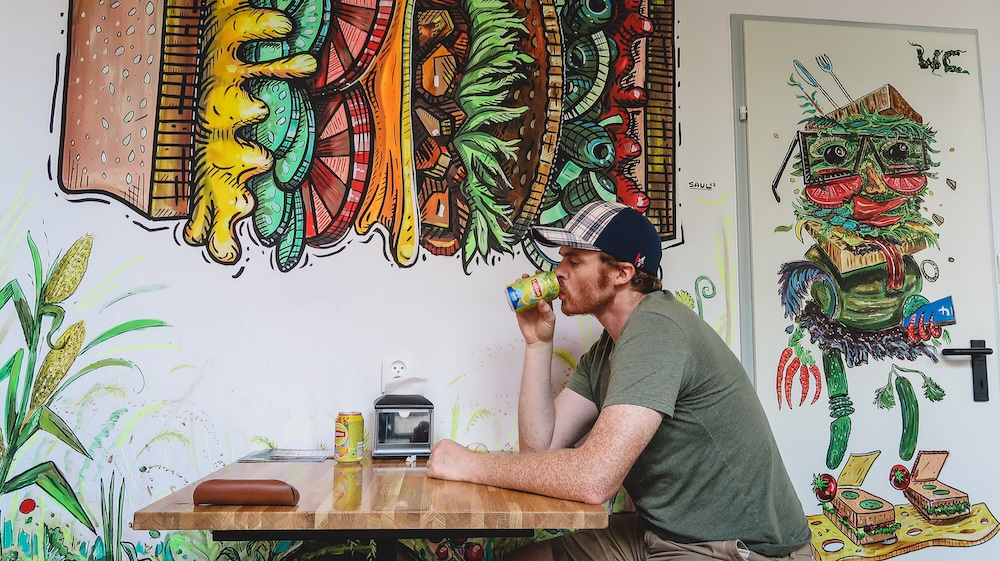
What To Eat and Drink in Wroclaw, Poland
Whether you’re in the mood for a hearty pierogi, a sweet treat, or a refreshing local brew, Wroclaw plenty of tricks up its sleeve. Here’s a guide to some must-try eats and drinks that will make your visit to Wroclaw a delicious adventure.
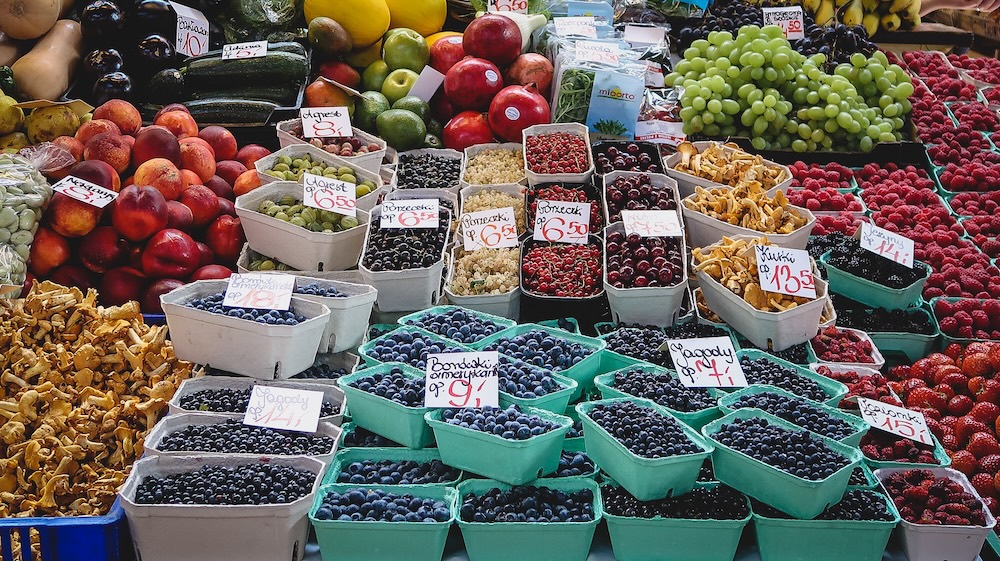
Traditional Polish Dishes: Pierogi, Bigos, and More
When in Wroclaw, indulging in traditional Polish dishes is a must. Start with pierogi, delicious dumplings filled with a variety of ingredients like potato and cheese, sauerkraut and mushroom, or minced meat. They can be served boiled or fried, and are often topped with a dollop of sour cream. Another classic dish to try is bigos, a hearty hunter’s stew made with sauerkraut, fresh cabbage, and a mix of meats. For something a bit more unique, look for golabki—cabbage rolls stuffed with minced meat and rice, then simmered in a savory tomato sauce.
- Pierogi: These iconic dumplings are available with a wide range of fillings, from savory to sweet. They’re a comforting and satisfying meal any time of day.
- Bigos: Known as hunter’s stew, this rich and flavorful dish is perfect for warming up on a chilly day. It’s packed with meat, cabbage, and a touch of sweetness from prunes or apples.
- Golabki: Cabbage rolls filled with a savory mixture of minced meat and rice, served with a tangy tomato sauce that enhances the flavor.
Tip: Look for a milk bar (bar mleczny), a type of traditional Polish eatery, for an authentic and affordable taste of these classic dishes.

Wroclaw’s Market Halls: A Foodie’s Paradise
Wroclaw’s market halls are a treasure trove for anyone looking to experience the city’s culinary diversity. The Hala Targowa, or Market Hall, is a bustling spot where you can sample local specialties, fresh produce, and unique Polish delicacies. Stroll through the vibrant stalls, where vendors offer everything from smoked sausages and cheeses to freshly baked bread and sweet pastries. Be sure to try the oscypek, a smoked cheese made from sheep’s milk that’s typically served grilled with a dollop of cranberry sauce. It’s a delicious snack that perfectly captures the flavors of the region.
- Hala Targowa: This lively market hall is the perfect place to taste local products and discover new flavors, all in a bustling, authentic atmosphere.
- Fresh Produce: Sample a variety of fruits, vegetables, and herbs from local farms, and don’t miss the seasonal offerings like wild mushrooms and berries.
- Oscypek: A traditional smoked cheese from the Tatra Mountains, oscypek is a must-try for cheese lovers. Grilled and served with cranberry sauce, it’s both savory and sweet.
Tip: Visit the market in the morning when it’s less crowded, and vendors are happy to chat and offer samples of their products.
Sweet Treats: Paczki, Sernik, and More
Polish desserts are the perfect way to end any meal, and Wroclaw has plenty of sweet treats to tempt your taste buds. Paczki are delicious, fluffy doughnuts filled with rose jam or custard and topped with powdered sugar or glaze. They’re especially popular during Fat Thursday, but you can find them year-round at bakeries throughout the city. Another must-try is sernik, a creamy Polish cheesecake that comes in a variety of flavors, often topped with seasonal fruits or a layer of chocolate. For something a little different, try szarlotka, a Polish-style apple pie that’s spiced with cinnamon and often served warm with a scoop of vanilla ice cream.
- Paczki: These decadent, filled doughnuts are a beloved Polish treat, perfect for satisfying a sweet tooth. Try them with different fillings, from traditional rose jam to rich chocolate.
- Sernik: This creamy, smooth cheesecake is a Polish favorite, often made with a base of twarog cheese and flavored with vanilla, raisins, or fruits.
- Szarlotka: A comforting apple pie made with spiced apples and a buttery crust, served warm and often paired with ice cream for an extra indulgent treat.
Tip: Head to Nasza Paczkarnia for some of the best paczki in the city, and don’t be afraid to try a few different flavors!
Wroclaw’s Craft Beer Scene: A Taste of Local Brews
Wroclaw’s craft beer scene is booming, with a variety of breweries and pubs offering unique and flavorful brews. The city’s craft beer revolution has given rise to several local breweries, such as Browar Stu Mostów and Doctor Brew, which are known for their innovative takes on traditional beer styles. Whether you’re a fan of hoppy IPAs, rich stouts, or refreshing lagers, there’s a pint waiting for you. Many of these breweries also have taprooms where you can sample a range of beers, often paired with delicious bar snacks or hearty Polish dishes.
- Browar Stu Mostów: This popular brewery is known for its creative and high-quality brews, with a focus on blending traditional Polish and international styles.
- Doctor Brew: A must-visit for IPA lovers, Doctor Brew offers a variety of hoppy beers with bold flavors and a modern twist.
- Craft Beer Pubs: Check out spots like Kontynuacja and Marynka Piwo i Aperitivo for a curated selection of local and international craft beers in a cozy, laid-back setting.
Tip: Join a brewery tour or a craft beer tasting session to learn more about the brewing process and discover your new favorite Polish beer.
Street Food: Zapiekanka and Kielbasa
For a quick bite or a late-night snack, Wroclaw’s street food scene offers some delicious options. Zapiekanka is a Polish take on an open-faced sandwich, made with a long baguette topped with melted cheese, mushrooms, and a variety of other toppings like ham, onions, or spicy ketchup. It’s a popular choice for a quick, satisfying meal on the go. If you’re in the mood for something meaty, try a kielbasa sausage, grilled to perfection and served with a side of mustard or horseradish. You’ll find these street food favorites at stalls throughout the city, especially near the main squares and nightlife areas.
- Zapiekanka: This cheesy, crispy delight is Poland’s answer to pizza, perfect for a quick lunch or a late-night snack after a night out.
- Kielbasa: Savor a juicy Polish sausage, grilled to perfection and served hot with tangy mustard or a side of pickles.
- Food Trucks: Keep an eye out for food trucks around the city, where you can find a variety of street food options, from pierogi to gourmet burgers.

Tip: Head to the Nadodrze district for some of the best street food spots, where you can enjoy a variety of dishes in a vibrant, artsy atmosphere.
Smacznego! (Enjoy your meal!)

Tours For Visitors To Wroclaw, Poland
Here are some of the top tours to consider during your visit.

1. Old Town Walking Tour
A guided walking tour of Wroclaw’s Old Town is a must for first-time visitors who want to get acquainted with the city’s history and architecture. This tour takes you through the heart of Wroclaw, including the stunning Market Square (Rynek), the historic Wroclaw Town Hall, and the charming Salt Square. Your guide will share fascinating stories and anecdotes about the city’s past, from its medieval origins to its transformation into a vibrant, modern metropolis. It’s a perfect way to explore the city’s most iconic landmarks while learning about the events that have shaped Wroclaw over the centuries.
- Market Square: Marvel at the colorful facades of historic buildings and the Gothic beauty of the Wroclaw Town Hall, one of the best-preserved in Europe.
- Salt Square: Discover this small but charming square, once a hub for salt trading, now filled with flower stalls and cozy cafes.
- Wroclaw’s Dwarfs: Keep an eye out for the famous dwarf statues hidden around the Old Town, each with its own unique character and story.
Tip: Wear comfortable shoes and bring a camera—there are plenty of photo-worthy spots and hidden gems along the route.

2. Oder River Cruise
For a different perspective on Wroclaw, hop aboard an Oder River cruise. This relaxing boat tour offers a unique view of the city’s skyline, historic bridges, and picturesque islands. As you glide along the water, you’ll pass by key landmarks such as the Cathedral of St. John the Baptist on Ostrów Tumski and the modern architecture of the University Library. The cruise is a perfect way to unwind after a day of sightseeing, offering a serene and scenic experience. Many tours also include commentary, providing insights into the history and significance of the places you pass.
- Scenic Views: Enjoy beautiful vistas of Wroclaw’s historic buildings and bridges, especially stunning during sunset.
- Relaxing Atmosphere: A perfect break from walking tours, the boat ride offers a tranquil way to see the city’s highlights from a new angle.
- Photography Opportunities: Capture stunning shots of Wroclaw’s skyline and landmarks, framed by the reflections on the river.
Tip: Choose an evening cruise to see the city illuminated by lights—Wroclaw’s architecture looks magical as the sun sets over the river.

3. Wroclaw’s Dwarf Hunt Tour
One of Wroclaw’s most unique and playful attractions is its collection of over 600 dwarf statues scattered throughout the city. A Dwarf Hunt Tour is a fun way to explore Wroclaw while searching for these quirky little figures, each with its own story and theme. Your guide will lead you to some of the most famous and hidden dwarfs, sharing the fascinating history behind this beloved tradition, which began as a symbol of resistance against the communist regime. It’s an engaging and light-hearted tour that’s great for families and anyone looking to experience the city in a fun, unconventional way.
- Interactive Adventure: Learn the stories behind the dwarfs and discover their unique personalities as you hunt for them across the city.
- Symbolic Meaning: Understand the origins of the dwarf tradition as a form of peaceful protest and its evolution into a beloved city icon.
- Family-Friendly Fun: Kids and adults alike will enjoy searching for these tiny sculptures, making it a perfect family activity.
Tip: Bring a dwarf map or use a smartphone app to keep track of the ones you’ve found—there are plenty to discover, and it’s easy to miss some!
4. Wroclaw Craft Beer Tour
If you’re a beer enthusiast, the Wroclaw Craft Beer Tour is a fantastic way to explore the city’s burgeoning craft beer scene. This guided tour takes you to some of Wroclaw’s best breweries and craft beer bars, where you’ll get to sample a variety of local brews, from hoppy IPAs to rich stouts. Your guide will share insights into the brewing process, the history of beer in Wroclaw, and the stories behind each brewery. It’s a great opportunity to taste some unique Polish beers and learn more about the city’s vibrant craft beer culture.
- Local Breweries: Visit popular spots like Browar Stu Mostów and Doctor Brew, known for their innovative and high-quality beers.
- Beer Tastings: Enjoy a curated selection of beers at each stop, paired with tasty snacks to complement the flavors.
- Brewing Insights: Learn about the brewing process and the unique ingredients used to create different beer styles.
Tip: Book your tour in advance, especially on weekends, as craft beer tours are popular and can fill up quickly.
5. Jewish Heritage Tour
Wroclaw’s Jewish heritage is an important part of its cultural history, and a Jewish Heritage Tour offers a deeper understanding of this community’s significant contributions to the city. The tour includes visits to sites such as the White Stork Synagogue, the only synagogue in Wroclaw to survive World War II, and the Old Jewish Cemetery, where many notable figures are buried. You’ll learn about the history of Wroclaw’s Jewish community, from its thriving pre-war years to the devastation of the Holocaust and its post-war revival. It’s a poignant and insightful experience that sheds light on a vital part of Wroclaw’s past.
- White Stork Synagogue: Explore this beautifully restored synagogue and its exhibitions on Jewish life in Wroclaw.
- Old Jewish Cemetery: Walk through this historic cemetery, where you can see the graves of prominent Jewish figures and unique tombstone art.
- Jewish Culture and History: Gain a deeper appreciation of the Jewish community’s contributions to Wroclaw’s cultural and intellectual life.
Tip: Check the opening hours of the White Stork Synagogue in advance, as they may vary depending on events and services.
6. Centennial Hall and Japanese Garden Tour
The Centennial Hall, a UNESCO World Heritage site, is one of Wroclaw’s most impressive architectural landmarks. This tour takes you through the hall’s striking concrete structure, designed by Max Berg in 1913, and highlights its innovative design and historical significance. After exploring the hall, the tour continues to the nearby Japanese Garden, a tranquil and meticulously maintained space that offers a peaceful retreat from the city’s hustle and bustle. It’s an ideal tour for architecture enthusiasts and anyone looking to experience a different side of Wroclaw.
- Architectural Marvel: Learn about the construction and design of Centennial Hall, a pioneering example of modernist architecture.
- Light and Sound Show: If your visit coincides with one, don’t miss the light and sound show at the Centennial Hall’s Multimedia Fountain, an impressive display set to music.
- Japanese Garden: Stroll through this serene garden, with its elegant ponds, bridges, and traditional Japanese landscaping.
Tip: Visit the Centennial Hall and Japanese Garden in the late afternoon to catch the evening light, which adds a magical glow to the gardens.

Wroclaw Accommodations Guide: Hotels, Guesthouses and Hostels
Here’s a guide to some of the best places to stay in Wroclaw, from chic hotels to quirky hostels.
1. Luxury Hotels: Elegance and Comfort
For those looking to indulge in a bit of luxury, Wroclaw boasts a selection of high-end hotels that offer top-notch amenities and service. Many of these hotels are centrally located, providing easy access to the city’s main attractions such as the Market Square and the Raclawice Panorama. You’ll find elegantly furnished rooms, on-site dining options, and often, stunning views of the city skyline or the Oder River. It’s an excellent choice for travelers who want to enjoy Wroclaw in style, with all the comforts of modern hospitality.
- Monopol Hotel: A historic five-star hotel known for its sophisticated decor, spacious rooms, and rooftop terrace offering panoramic views of the city.
- AC Hotel by Marriott Wroclaw: Combining modern design with historic architecture, this hotel features a luxurious spa, indoor pool, and a stylish bar.
- The Granary – La Suite Hotel: Housed in a 16th-century building, this boutique hotel offers a unique blend of historic charm and contemporary elegance, with spacious suites and a gourmet restaurant.
Tip: Book a room with a view of the Market Square for a truly memorable stay, especially during the festive Christmas season when the square is beautifully illuminated.
2. Boutique Guesthouses: Cozy and Unique
For a more intimate and personalized experience, Wroclaw’s boutique guesthouses are the perfect choice. These accommodations often reflect the local character and charm, featuring unique decor and a welcoming atmosphere. Many are located in historic buildings, offering a cozy retreat with modern comforts. Staying at a guesthouse gives you the chance to experience Wroclaw like a local, with hosts who can offer insider tips on the best places to eat, drink, and explore. It’s ideal for travelers who appreciate a homey vibe and a bit of local flair.
- Art Hotel: A charming boutique hotel in a historic building, just steps away from the Market Square. It’s known for its artistic interiors, comfortable rooms, and excellent breakfast.
- Kamienica Pod Aniołami: Located near the Opera House, this guesthouse offers spacious rooms with a warm, welcoming atmosphere and a lovely courtyard garden.
- Cinema Hostel: A quirky choice for film buffs, this guesthouse features movie-themed rooms and a fun, laid-back vibe, perfect for younger travelers.
Tip: Ask your host for recommendations on local eateries and hidden gems—guesthouse owners often have the best tips for discovering Wroclaw’s off-the-beaten-path spots.
3. Budget-Friendly Hostels: Affordable and Social
Wroclaw’s hostels provide a budget-friendly option for travelers looking to save on accommodation without sacrificing comfort. With dormitory-style rooms and private options, hostels are ideal for solo travelers, backpackers, or anyone looking to meet new people. Many hostels in Wroclaw offer modern amenities, vibrant common areas, and organized social events, making them a great choice for those who want to experience the city’s social scene. Their central locations ensure you’re never far from the city’s top attractions and lively nightlife.
- Grampa’s Hostel: A popular choice among backpackers, offering comfortable dorms and private rooms, a fully equipped kitchen, and a friendly atmosphere.
- The One Hostel: Situated right on the Market Square, this hostel offers unbeatable views, a lively bar, and a spacious common area perfect for meeting fellow travelers.
- Chilli Hostel: A cozy and colorful hostel with a laid-back vibe, featuring a sunny terrace and regular social events like pub crawls and movie nights.
Tip: Check if the hostel offers free walking tours or other activities—many hostels organize these for guests, providing a fun and easy way to explore the city and meet new people.
4. Unique Stays: Experience Something Different
For those who want a truly unique experience, Wroclaw offers a range of unconventional accommodations that go beyond the typical hotel or hostel. From staying in a historical monastery to booking a night in a modern loft with artistic flair, these options add an extra element of excitement to your trip. Whether you’re celebrating a special occasion or just looking to make your visit more memorable, these unique stays provide a creative twist on the traditional lodging experience.
- Hotel SleepWalker: Located in the heart of the city, this boutique hotel offers uniquely designed rooms with a blend of modern and vintage elements, perfect for a romantic getaway.
- Loft Hostel: Enjoy a stay in this industrial-style loft, featuring open-plan living spaces, modern decor, and a rooftop terrace with views of the city.
- Monastery Garden Apartments: Set in a peaceful former monastery, these apartments offer a tranquil escape with beautifully restored interiors and a lush garden.
Tip: Book early for unique accommodations, as these one-of-a-kind stays are popular and tend to fill up quickly, especially during peak travel seasons.
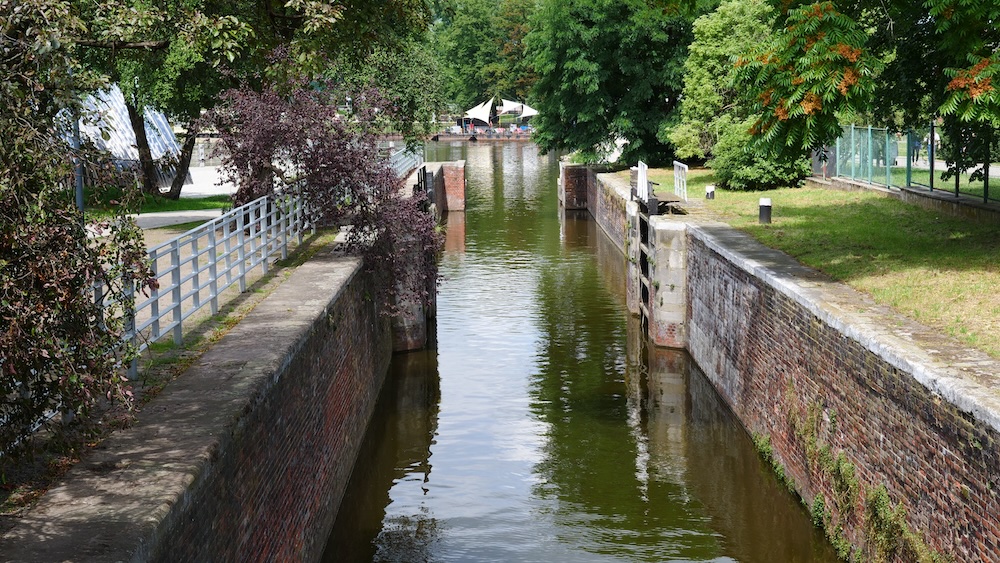
Day Trips From Wroclaw, Poland
Here are some top recommendations for memorable excursions just a short journey from Wroclaw.
1. Ksiaz Castle: Poland’s Third Largest Castle
Perched on a forested hilltop near the town of Walbrzych, Ksiaz Castle is a must-see for history buffs and architecture enthusiasts. Known as the “Pearl of Lower Silesia,” this stunning castle combines Gothic, Baroque, and Renaissance styles, offering a fascinating glimpse into Poland’s aristocratic past. Wander through its opulent halls, admire the richly decorated chambers, and explore the surrounding terraces and gardens that offer breathtaking views of the lush countryside. A visit to Ksiaz is like stepping back in time to a world of grandeur and intrigue.
- Castle Tours: Explore the magnificent interiors, including the Maximilian Hall and the castle’s underground tunnels.
- Palm House: Visit the nearby Palm House, featuring exotic plants and an extensive collection of cacti.
- Secret History: Learn about the castle’s mysterious World War II history, when it was used as part of Hitler’s secret Riese complex.
Tip: Combine your visit to Ksiaz Castle with a trip to the nearby town of Swidnica to see the beautiful, UNESCO-listed Church of Peace.
2. Swidnica and the Church of Peace
The charming town of Swidnica is home to one of Poland’s most extraordinary architectural gems: the Church of Peace. This UNESCO World Heritage site, built in the mid-17th century, is the largest timber-framed religious building in Europe. Its simple exterior contrasts with the stunning Baroque interior, adorned with intricate wood carvings, vibrant frescoes, and a spectacular altar. After exploring the church, take some time to wander around the town’s picturesque Market Square and sample some local cuisine at one of the many cozy restaurants.
- Church of Peace: Marvel at the breathtaking interior of this unique wooden church, a testament to the perseverance and ingenuity of its builders.
- Market Square: Enjoy a leisurely stroll around Swidnica’s historic Market Square, with its colorful facades and charming cafes.
- Museum of Old Merchants: Learn about the history of trade in the region at this fascinating museum, housed in a historic townhouse.
Tip: Check the church’s schedule for organ concerts—they’re a wonderful way to experience the church’s incredible acoustics and ambiance.
3. Karpacz and the Karkonosze Mountains
If you’re craving fresh air and scenic vistas, head to the mountain town of Karpacz, located in the foothills of the Karkonosze Mountains. This popular resort town is a gateway to some of the best hiking and skiing in the region. Take a hike up Sniezka, the highest peak in the Karkonosze range, for panoramic views of Poland and the Czech Republic. For a more leisurely day, explore the charming town itself, visit the unique Wang Church, or enjoy a relaxing walk through the beautiful surrounding forests and valleys.
- Sniezka Peak: Challenge yourself with a hike to the summit of Sniezka, or take a chairlift partway up for easier access to stunning views.
- Wang Church: Visit this beautiful wooden church, originally built in Norway and reassembled in Karpacz, offering a fascinating blend of Scandinavian and Polish heritage.
- Local Cuisine: Try traditional mountain dishes at one of the many local restaurants, such as placki ziemniaczane (potato pancakes) or pierogi filled with forest mushrooms.
Tip: If you’re visiting in winter, don’t miss the chance to try skiing or snowboarding at the local slopes—Karpacz is a favorite among Polish winter sports enthusiasts.
4. Wieliczka Salt Mine
Although a bit further afield, the Wieliczka Salt Mine is a fascinating day trip that’s well worth the journey. Located near Krakow, this UNESCO World Heritage site is one of the world’s oldest salt mines, in operation for over 700 years. Descend into a labyrinth of underground tunnels, where you’ll discover stunning chapels, intricate carvings, and even a subterranean lake—all carved out of salt. The highlight is the breathtaking St. Kinga’s Chapel, a vast underground cathedral adorned with chandeliers made from rock salt. It’s a truly unique experience that offers a glimpse into Poland’s mining heritage.
- St. Kinga’s Chapel: Marvel at this incredible underground church, carved entirely out of salt, complete with intricate statues and reliefs.
- Salt Carvings: Explore the many sculptures and chapels carved by miners over the centuries, showcasing their artistry and craftsmanship.
- Health Benefits: The mine’s unique microclimate is believed to have therapeutic properties, making it a popular destination for health-conscious visitors.
Tip: Wear comfortable shoes and bring a jacket—the temperature in the mine stays cool year-round, around 14°C (57°F).
5. Boleslawiec: The Ceramics Capital
For a more creative day trip, visit the town of Boleslawiec, famous for its beautiful hand-painted ceramics. The distinctive blue-and-white pottery, known as Boleslawiec pottery, has been produced here for centuries and makes a perfect souvenir or gift. Tour one of the local factories to see the artisans at work, then browse the showrooms and shops filled with a stunning array of patterns and designs. Afterward, explore the charming town center, with its colorful buildings and vibrant atmosphere.
- Ceramic Workshops: Take a tour of a local ceramics factory to learn about the pottery-making process and watch artisans hand-painting the intricate designs.
- Pottery Shops: Shop for unique pieces, from traditional plates and bowls to more modern designs, all featuring the signature Boleslawiec patterns.
- Museum of Ceramics: Visit this small but fascinating museum to learn about the history and techniques of Boleslawiec pottery.
Tip: Plan your visit during the annual Ceramics Festival in August, when the town comes alive with workshops, exhibitions, and live music.
6. Opole: Poland’s Hidden Gem
Opole, one of Poland’s oldest cities, offers a delightful mix of history, culture, and picturesque views. Known as the “Venice of Poland,” this charming city is famous for its scenic canals, colorful facades, and rich musical heritage. Visit the Opole Amphitheater, home to the annual National Festival of Polish Song, and stroll through the beautiful Opole Zoo, set on an island in the Oder River. The city’s Old Town, with its vibrant Market Square and medieval Piast Tower, is perfect for a leisurely exploration.
- Piast Tower: Climb to the top of this medieval tower for stunning views of the city and surrounding countryside.
- Opole Amphitheater: Learn about Poland’s musical heritage at this iconic venue, known for hosting the country’s most prestigious music festival.
- Opole Zoo: Spend an afternoon exploring this lovely zoo, which is home to a wide variety of animals and beautifully landscaped gardens.
Tip: Try to time your visit with the National Festival of Polish Song in June for a unique experience of Polish music and culture.

Wroclaw Transportation Guide
From efficient trams and buses to scenic cycling routes and affordable taxis, this guide will help you make the most of your time in this beautiful Polish city.
source: Nomadic Samuel + That Backpacker on Samuel and Audrey YouTube channel
Trams: The Heart of Wroclaw’s Public Transport
Wroclaw’s tram system is one of the most efficient ways to explore the city. The extensive network connects almost every corner of Wroclaw, with lines running through the bustling city center, past major attractions, and out to the quieter suburbs. Trams are not only reliable and frequent but also offer a great way to see the city from a local’s perspective. Hop on a tram to visit landmarks like the Market Square, the Wroclaw Zoo, or the scenic Grunwald Bridge.
- Extensive Network: Wroclaw’s tram system covers the entire city, making it easy to reach popular destinations and hidden gems alike.
- Affordable Fares: A single ticket costs around 4.60 PLN, and there are day passes available for unlimited travel.
- Night Services: Several tram lines operate at night, ensuring you can get around the city even after dark.
Tip: Download the Jakdojade app to check tram schedules and plan your routes in real time—it’s a lifesaver for navigating the city!
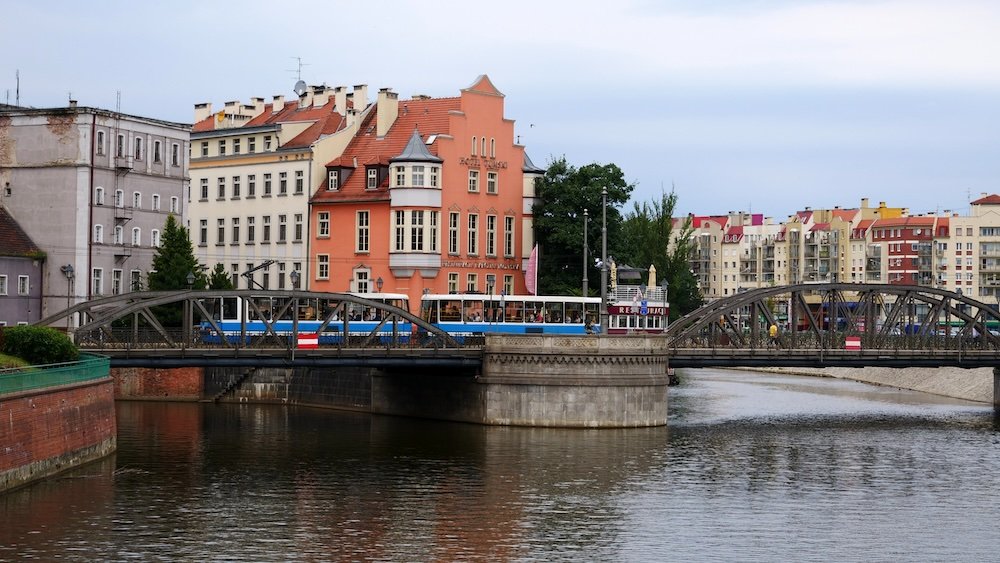
Buses: Reach the Outskirts and Beyond
While trams are perfect for city travel, Wroclaw’s bus network is ideal for reaching destinations that are a bit further afield. Buses connect the city center to surrounding neighborhoods and attractions, such as the peaceful Szczytnicki Park and the historic Centennial Hall. The buses are modern and comfortable, and most of them have digital screens displaying the next stops. With frequent service and an extensive network, buses are a convenient option for exploring all that Wroclaw and its outskirts have to offer.
- Suburban Access: Reach areas outside the tram network, including suburban shopping centers and local parks.
- Airport Connection: Bus line 106 runs directly from Wroclaw’s city center to the airport, making it easy to catch your flight.
- Combined Tickets: Use the same tickets for both trams and buses, allowing you to switch between modes of transport seamlessly.
Tip: For airport trips, leave plenty of time, as traffic can sometimes slow down the bus journey—especially during rush hour.
Taxis and Ride-Sharing: Quick and Convenient
For those times when you need to get somewhere quickly or prefer a bit more comfort, taxis and ride-sharing services like Uber and Bolt are readily available throughout Wroclaw. Taxis are relatively affordable compared to other European cities, and drivers are usually friendly and helpful. Ride-sharing apps offer the added convenience of cashless payment and a clear indication of your fare before the journey begins. Whether you’re heading to a restaurant, catching an early flight, or exploring the city’s nightlife, taxis and ride-shares are a hassle-free option.
- Quick Transport: Ideal for getting to places not easily accessible by public transport, or if you’re carrying heavy luggage.
- Language Assistance: Most ride-share drivers use navigation apps, so there’s no need to worry about language barriers.
- Affordable Fares: Compared to Western European cities, taxi fares in Wroclaw are quite reasonable, making them a good option for late-night travel.
Tip: If you’re using a traditional taxi, make sure it’s marked and metered to avoid any potential overcharging.
Cycling: Explore Wroclaw on Two Wheels
Wroclaw is one of the most bike-friendly cities in Poland, with an extensive network of bike paths and dedicated cycling lanes that make it easy to explore on two wheels. The city’s public bike-sharing system, Wroclaw City Bike, offers a convenient and affordable way to get around. Simply rent a bike from one of the many stations dotted around the city and return it to any other station when you’re done. Cycling is a fantastic way to experience Wroclaw’s parks, riverside paths, and historic streets at your own pace.
- Bike Rentals: Use the Wroclaw City Bike system for short trips around the city, with the first 20 minutes of each ride being free.
- Scenic Routes: Ride along the Oder River, through the leafy Szczytnicki Park, or explore the charming streets of the Old Town.
- Safety First: Helmets aren’t mandatory but are recommended for safety, and always use the designated cycling paths where possible.
Tip: Download the Wroclaw City Bike app to easily locate bike stations, check bike availability, and manage your rentals on the go.

Walking: Discover Wroclaw on Foot
Wroclaw’s compact size and pedestrian-friendly layout make it perfect for exploring on foot. The city’s historic center is best experienced by walking, allowing you to take in its beautiful architecture, charming side streets, and hidden courtyards. Stroll through the vibrant Market Square, cross over to Cathedral Island, and enjoy the peaceful green spaces along the Oder River. Walking not only gives you the freedom to explore at your own pace but also lets you stumble upon those unexpected delights that you might miss using other modes of transport.
- Historic Old Town: Wander through the maze of cobblestone streets and discover the city’s rich history and cultural landmarks.
- Cathedral Island: Cross the Tumski Bridge to this serene island, where you can explore the stunning Wroclaw Cathedral and its tranquil surroundings.
- River Walks: Take a leisurely stroll along the Oder River, where you can enjoy beautiful views of the city and its many bridges.
Tip: Wear comfortable shoes and bring a map or use a navigation app to explore Wroclaw’s hidden gems and avoid getting lost!
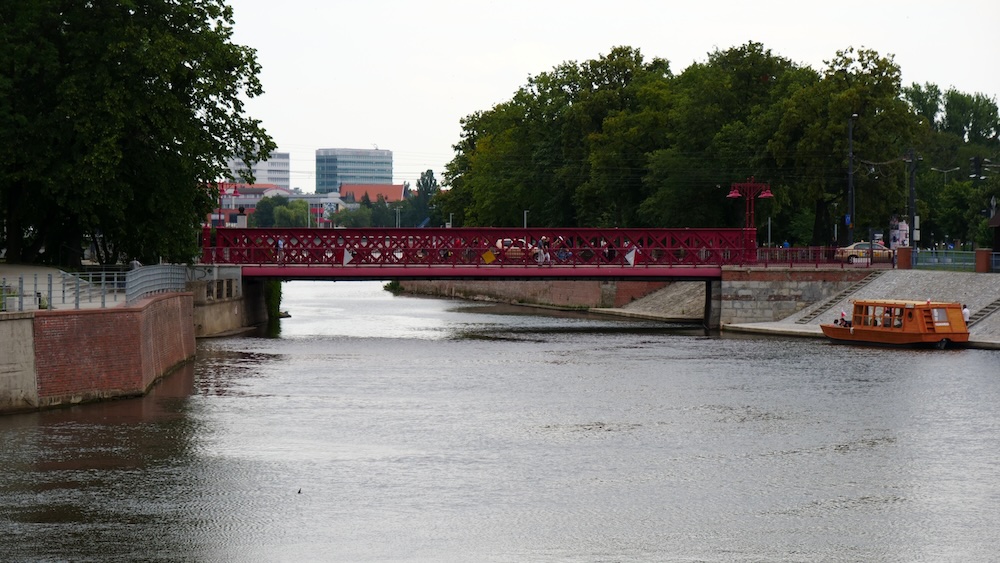

Where To Visit After Your Trip To Wroclaw?
Here are some fantastic places to visit after your time in Wroclaw.
source: That Backpacker + Nomadic Samuel on Samuel and Audrey channel
1. Krakow: Poland’s Cultural Heart
Krakow, often considered the cultural capital of Poland, is a city that seamlessly blends medieval charm with modern vibrancy. Its beautiful Old Town, a UNESCO World Heritage site, is filled with historic treasures like the iconic Wawel Castle and the bustling Main Market Square. Stroll through the atmospheric streets, visit the poignant Kazimierz Jewish Quarter, and don’t miss the chance to see the breathtaking St. Mary’s Basilica. Krakow is also a gateway to the sobering but essential visit to Auschwitz-Birkenau, offering a profound reflection on the events of World War II.
- Wawel Castle: Explore the royal castle and its magnificent collection of art, artifacts, and regal chambers, all set atop a picturesque hill overlooking the Vistula River.
- Kazimierz Jewish Quarter: Discover the rich history and vibrant cultural life of this historic district, with its synagogues, cafes, and street art.
- St. Mary’s Basilica: Marvel at the stunning Gothic architecture and the famous wooden altarpiece, and listen for the trumpet call that echoes from the tower every hour.
Tip: Take a day trip to the Wieliczka Salt Mine, just outside Krakow, to see its incredible underground chapels and tunnels carved entirely from salt.
source: Nomadic Samuel plus That Backpacker on Samuel and Audrey channel
2. Poznan: A City of History and Innovation
Poznan is a dynamic city that perfectly balances its historical significance with a youthful, modern spirit. Known as the birthplace of the Polish state, Poznan is home to the impressive Ostrow Tumski cathedral island, where you can explore Poland’s oldest cathedral. The city’s vibrant Old Market Square is a lively hub filled with colorful townhouses, bars, and restaurants. Poznan is also famous for its innovative cultural scene, with numerous festivals, museums, and theaters showcasing the best of Polish creativity and entrepreneurship.
- Ostrow Tumski: Visit the stunning cathedral, which dates back to the 10th century, and explore the island’s peaceful surroundings and historic charm.
- Old Market Square: Enjoy a coffee or a meal in one of the many outdoor cafes, and watch the mechanical billy goats emerge from the town hall clock at noon.
- Poznan Croissant Museum: Learn about the city’s signature pastry, the St. Martin’s croissant, and even try your hand at making one in this interactive museum.
Tip: Visit Poznan during the Malta Festival in June, one of Poland’s biggest cultural events, featuring theater, dance, and music performances from around the world.
3. Torun: The City of Copernicus
Torun, a stunning medieval city and the birthplace of astronomer Nicolaus Copernicus, is a true gem on the Vistula River. Its beautifully preserved Old Town, a UNESCO World Heritage site, is a labyrinth of Gothic architecture, including the impressive Torun Cathedral and the picturesque Old Town Hall. Torun is also famous for its gingerbread, a tradition dating back to the Middle Ages. Explore the Gingerbread Museum to learn about this sweet delicacy and try your hand at baking your own. It’s a delightful destination that offers a charming blend of history, science, and delicious treats.
- Copernicus House: Visit the home of Nicolaus Copernicus, now a museum dedicated to his life and groundbreaking contributions to astronomy.
- Gingerbread Museum: Learn about Torun’s famous gingerbread tradition, and enjoy a hands-on baking experience in this interactive museum.
- Old Town Hall: Climb to the top of the tower for panoramic views of the city’s beautiful medieval architecture and the surrounding countryside.
Tip: Try the traditional pierniki (gingerbread) at one of the local bakeries—they make great souvenirs and are a delicious reminder of your time in Torun.
source: That Backpacker plus Nomadic Samuel on Samuel and Audrey YouTube channel
4. Gdansk: A Maritime Marvel
Gdansk, situated on the Baltic coast, is a city with a rich maritime history and a stunningly restored Old Town. Its colorful waterfront, lined with historic granaries and modern restaurants, is perfect for a leisurely stroll. Don’t miss the Long Market, where you can see the beautiful Neptune Fountain and the impressive Artus Court. For a deeper dive into the city’s history, visit the European Solidarity Centre, dedicated to the Solidarity movement that played a key role in the fall of communism in Poland. Gdansk’s unique blend of history, culture, and seaside charm makes it a must-visit destination.
- Long Market: Wander through this picturesque street, lined with pastel-colored buildings, shops, and cafes, and stop by the iconic Neptune Fountain.
- European Solidarity Centre: Explore the history of the Solidarity movement and its impact on Poland’s path to democracy in this engaging, interactive museum.
- Westerplatte: Visit the historic site where World War II began, and pay tribute to the soldiers who defended Poland’s coast in 1939.
Tip: Take a day trip to the nearby resort town of Sopot to relax on the beautiful sandy beaches and stroll along the famous wooden pier.
5. Zakopane: The Gateway to the Tatra Mountains
For nature lovers and adventure seekers, Zakopane is the perfect destination to visit after Wroclaw. Known as the “Winter Capital of Poland,” this charming town at the foot of the Tatra Mountains offers breathtaking scenery and plenty of outdoor activities year-round. In the winter, you can hit the slopes for skiing or snowboarding, while the warmer months are ideal for hiking, mountain biking, and exploring the stunning alpine landscape. Zakopane is also famous for its unique wooden architecture and vibrant highland culture, which you can experience at the local markets and traditional restaurants.
- Gubałówka Hill: Take a funicular ride up this hill for panoramic views of Zakopane and the Tatra Mountains, and enjoy the lively atmosphere of the market at the top.
- Tatra National Park: Hike one of the many trails in this beautiful park, with options ranging from easy walks to challenging mountain ascents.
- Krupówki Street: Stroll down Zakopane’s main street, lined with shops, restaurants, and stalls selling local crafts and delicacies.
Tip: Try the traditional highland cheese oscypek—grilled and served with cranberry sauce, it’s a delicious local specialty you won’t want to miss.
6. Lodz: Poland’s Creative Hub
Lodz, once an industrial powerhouse, has reinvented itself as Poland’s creative and cultural hub. The city’s vibrant art scene is showcased in its many galleries, murals, and innovative cultural spaces. A visit to the Manufaktura complex, a former textile factory turned into a sprawling arts and entertainment center, is a must. The city’s main street, Piotrkowska, is one of the longest commercial streets in Europe, lined with eclectic architecture, lively cafes, and unique boutiques. Lodz is a city of contrasts, where the past and future coexist in a fascinating, dynamic way.
- Manufaktura: Explore this massive complex, featuring museums, restaurants, shops, and cultural events—all set in beautifully restored red-brick factory buildings.
- Piotrkowska Street: Wander along this vibrant thoroughfare, known for its impressive 19th-century architecture, street art, and buzzing nightlife.
- EC1 Lodz: Visit this former power plant, now transformed into a cultural and science center, with interactive exhibits and a planetarium.
Tip: Take a guided tour of Lodz’s famous murals—over 100 large-scale artworks decorate the city’s buildings, making it one of the most impressive urban galleries in Europe.
source: Nomadic Samuel teaming up with That Backpacker on Samuel and Audrey channel
7. Mighty Malbork Castle
Malbork, home to the magnificent Malbork Castle, is a must-visit for history enthusiasts and architecture lovers alike. This colossal fortress, built by the Teutonic Knights in the 13th century, is the largest brick castle in the world and a UNESCO World Heritage site. Wander through its grand halls, explore the impressive armory, and marvel at the intricate details of the Gothic architecture. The castle complex also includes beautiful gardens and courtyards, making it a perfect place to immerse yourself in the medieval history of the region. It’s an easy day trip from Gdansk, but you could easily spend an entire day exploring the castle and its surroundings.
- Castle Tour: Take a guided tour to learn about the fascinating history of the Teutonic Knights and the strategic importance of Malbork Castle in medieval Europe.
- Medieval Interiors: Explore the richly decorated interiors, including the Grand Refectory and the stunning High Castle, where the knights once held court.
- Museum Collections: Discover a variety of exhibitions showcasing medieval artifacts, including weapons, armor, and historical documents.
Tip: Plan your visit to coincide with the annual Siege of Malbork reenactment in July, where you can witness a thrilling re-creation of historical battles and medieval life.
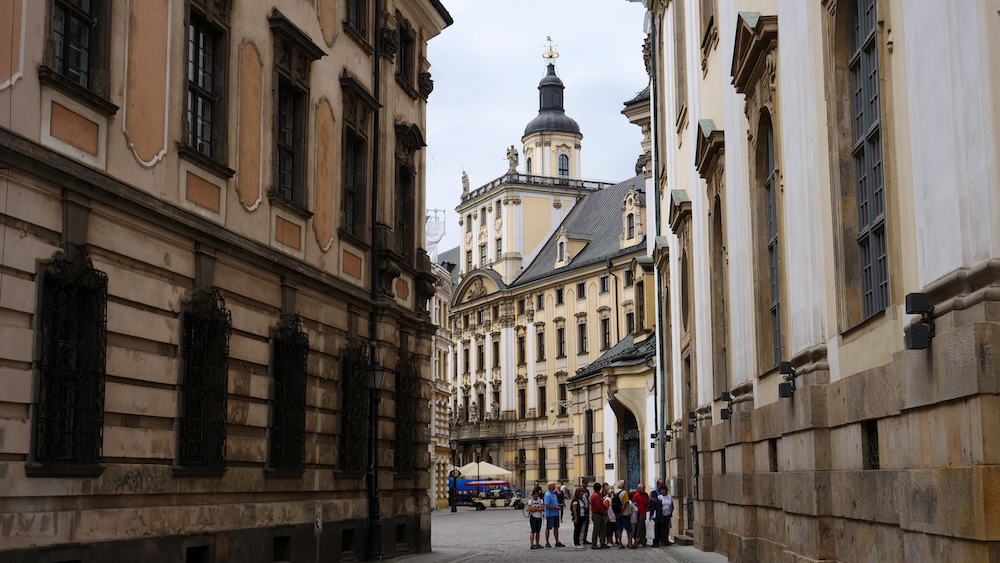
Essential Wroclaw Travel Questions Answered: Practical Tips, Local Insight & First-Timer Advice
How many days do you really need in Wroclaw for a first-time visit?
Three days. That’s the sweet spot where Wroclaw really starts to open up. With two full days you can cover the Old Town, Cathedral Island, the dwarfs, a river cruise and one or two museums without running yourself ragged. Add a third day and you can slow the pace, linger in cafes, hit places like Hydropolis or the Japanese Garden, and maybe squeeze in a nearby day trip like Ksiaz Castle.
If you’re tight on time, you can “see” Wroclaw in a fast 24–36 hours, but it’ll feel rushed. On the flip side, if you’re the kind of traveler who loves museums, day trips, and just hanging out in pretty squares, four or five days here is very easy to fill without getting bored.
What’s the best time of year to visit Wroclaw for good weather and fewer crowds?
It depends. If you want that sweet balance of decent weather and manageable crowds, aim for late April to June or September to early October. Spring brings blooming parks and comfortable temperatures for walking tours and boat cruises. Autumn is all about golden leaves in Szczytnicki Park and cozy evenings in pubs.
July and August are warm and lively, but they’re also peak season for tourists and prices. Winter can be magical if you time it for the Wroclaw Christmas Market in late November/December, but expect chilly temperatures, short days, and a more limited day-trip window.
Is Wroclaw worth visiting if I’ve already been to Krakow or Gdansk?
Absolutely. Wroclaw has a very different personality from both Krakow and Gdansk. It feels more youthful and lived-in, with a huge student population and a slightly quirky streak (the dwarfs, the neon courtyard, Hydropolis, the open-air Neon Side Gallery).
Where Krakow leans historic and Gdansk leans maritime, Wroclaw is all about rivers, bridges, and little discoveries: gnome statues under your feet, hidden courtyards, riverside bike paths, and gas lamps lit by hand on Cathedral Island at dusk. It’s also less overrun than the big-name cities, so you get that “I found something a bit under the radar” feeling.
Which area is best to stay in Wroclaw as a visitor?
For most first-timers, staying in or near the Old Town (Rynek and surrounding streets) is the easiest choice. You’ll be able to walk to the Market Square, Cathedral Island, the University Quarter, and tons of restaurants, milk bars, bars, and cafes. It’s lively, atmospheric, and perfect if you like to stroll home after dinner instead of dealing with transport.
If you prefer something a bit quieter but still central, look just across the river near the University or in Nadodrze. Those areas have more of a neighborhood feel, with cool street art, indie cafes, and a slightly more local vibe while still being walkable or a short tram ride from the main sights.
How do you get from Wroclaw Airport to the city centre or Old Town?
Easy. The cheapest option is public bus 106 from Wroclaw Airport to the city. It runs roughly every 15–20 minutes during the day and takes about 35–45 minutes depending on traffic. At night, it switches to line 206 on a similar route. A standard single ticket is around 4.60 PLN and you can buy it from machines at the stop or on board on many newer vehicles.
If you don’t feel like figuring out tickets after a flight, taxis and ride-share apps (like Uber or Bolt) are readily available outside the terminal. The ride into the centre usually takes around 20–25 minutes in normal traffic and costs more than the bus, but it’s still reasonable by Western Europe standards. If you’re traveling as a couple or small group with luggage, a taxi or pre-booked transfer is often worth the extra comfort.
Is Wroclaw safe, and are there any scams or areas I should watch out for?
Yes. Overall, Wroclaw feels very safe to walk around, even in the evening, especially in the central areas where most visitors stay. Like anywhere, you’ll want to use basic city smarts: keep an eye on your belongings in busy trams, markets, and around the Rynek, and don’t flash big wads of cash or leave your phone on a cafe table on the edge of the sidewalk.
The main “scams” tend to be the usual suspects: over-priced unofficial taxis, pushy people trying to drag you into certain bars, or sketchy money exchange rates at tourist-trap kantor booths. Stick to marked, metered taxis or ride-share apps, use reputable ATMs or exchange offices, and you’ll be fine. At night, if an area feels a bit too dark or empty, just hop a tram or taxi instead of cutting through back alleys.
Do I need cash in Wroclaw, or can I pay by card everywhere?
Most of the time, card is king. Poland is very card-friendly and contactless payments are the norm—restaurants, supermarkets, cafes, museums, and even many kiosks happily accept cards and mobile payments. You can get through most of a trip just tapping your card or phone.
That said, I still like to carry a small amount of cash (PLN) for things like public toilets, tiny kiosks, old-school bars, or the occasional place where the card machine mysteriously “doesn’t work today.” Grab a bit of cash from an ATM when you arrive and you’ll have all bases covered.
Is Wroclaw a good destination if I’m travelling with kids?
Yes. Wroclaw is surprisingly family-friendly. Kids usually fall in love with the dwarfs instantly—you can literally turn sightseeing into a scavenger hunt and keep them entertained while you explore the Old Town. Kolejkowo (the miniature world), the zoo and Afrykarium, the Japanese Garden, river cruises, and the Neon Side Gallery are all big hits with younger travelers.
The city is compact, parks and playgrounds are easy to find, and you’ll have no trouble getting high-chairs or kid-friendly meals in most restaurants. Just keep in mind that summer afternoons can get hot and crowded in the main square, so plan indoor breaks (Hydropolis, museums, cafes) and early starts to keep everyone happy.
How easy is Wroclaw to get around without a car?
Very easy. In fact, I’d say skip the car entirely. The tram and bus network is extensive, cheap, and straightforward once you get the hang of it. Many of the key sights—Old Town, Cathedral Island, University Quarter, riverfront, some parks—are walkable from a central base, and trams fill in the gaps when you don’t feel like walking.
For short hops, I like to mix it up: walk between neighbourhoods, grab a tram when my feet get tired, and use ride-share late at night or when I’m heading somewhere awkward with luggage. If you’re planning lots of trips in one day, look at 24-hour or multi-day public transport passes instead of buying single tickets each time.
Do I need to book Wroclaw attractions like Panorama Raclawice, Hydropolis, or Sky Tower in advance?
It depends. For popular, timed-entry attractions like the Panorama of the Battle of Raclawice or Hydropolis, I’d book ahead, especially on weekends, school holidays, and during summer. Slots can and do sell out in peak times, and having a ticket in hand saves you from awkward “no availability” surprises.
Places like the Sky Tower observation deck, the zoo, or river cruises are a bit more flexible, but you’ll still benefit from checking schedules and, when possible, reserving in advance for specific time slots or certain tours. On shoulder-season weekdays you can often just walk up; during Christmas markets or long weekends, plan ahead.
What’s a realistic daily budget for Wroclaw (accommodation, food, activities)?
Compared to Western Europe, Wroclaw still feels kind to the wallet. For a mid-range traveler, a rough daily budget might look something like:
- Budget style (hostel bed, self-catered or milk bars, mostly free sights): around 40–60 EUR per day
- Mid-range (nice guesthouse/hotel, restaurant meals, a museum or paid attraction most days): roughly 80–120 EUR per day
- Comfortable splurge (central boutique hotel, nicer dinners, cocktails, paid tours): from 130–180+ EUR per day
Of course, you can nudge that up or down depending on how often you eat out, how many tours you book, and how central your accommodation is. Milk bars, market halls, and bakeries are your best friends if you want to keep food costs down without sacrificing flavor.
What should I pack for a trip to Wroclaw in different seasons?
Wroclaw has proper seasons, so packing smart makes a big difference. For spring and autumn, think layers: a light waterproof jacket, a warm sweater or fleece, comfortable jeans or trousers, and shoes you don’t mind wearing all day on cobblestones. Evenings can still be cool, so a hat and scarf aren’t overkill in April or October.
Summer can be warm to hot, so bring breathable clothes, sunglasses, sunscreen, and a light layer for breezy evenings by the river. Winters are cold and can be icy, especially around the Christmas Market: you’ll want a proper winter coat, gloves, hat, scarf, and footwear with decent grip. Regardless of the season, pack comfortable walking shoes—you’ll be on your feet a lot.
Are the Wroclaw dwarfs really worth hunting down, and how do I find them?
Yes. They’re half sightseeing, half game, and they give Wroclaw a personality you don’t get in most cities. The dwarfs are scattered all over—some obvious, some tucked behind benches or peeking out from shopfronts—and you’ll start noticing them everywhere once you slow down and look around. It’s an easy way to keep kids engaged and adults amused.
You can pick up a dwarf map from the tourist office or download an app that tracks their locations and lets you tick them off as you go. I wouldn’t turn it into a stressy “collect them all” mission (there are hundreds), but weaving dwarf hunting into your walks around the Old Town, University Quarter, and Nadodrze is a lot of fun.
Is Wroclaw a good base for day trips around Lower Silesia?
Absolutely. One of Wroclaw’s big strengths is how many cool places you can reach in a day. Ksiaz Castle, the Church of Peace in Swidnica, Boleslawiec (for ceramics), the Karkonosze Mountains around Karpacz, and even Opole are all within range for day trips by train, bus, or organized tour.
If you don’t want to move hotels every night, using Wroclaw as a base for three to five days and fanning out on one or two day trips works really well. Trains in Poland are generally reliable and reasonably priced, and if you prefer structure, there are plenty of guided excursions that handle the logistics for you.
How accessible is Wroclaw for travellers with limited mobility?
Wroclaw is getting better, but it’s still a mix. Many newer trams are low-floor and have ramps, and modern attractions, shopping centres, and big museums usually have lifts and accessible toilets. Big pedestrian areas like the Market Square are flat, but the cobblestones can be tiring for wheelchairs, scooters, or anyone with joint issues.
Older buildings, churches, and some restaurants are trickier—think narrow doorways, a step or two at the entrance, or stair-only access to upper floors and viewpoints like towers. If accessibility is a major concern, I’d choose accommodation in a modern or recently renovated building with lift access, and prioritize riverfront paths, parks, and larger attractions where accessibility information is clearer and facilities are more up-to-date.
Can I visit Wroclaw as a day trip from another Polish city, or is it better to stay overnight?
You can do Wroclaw as a day trip from cities like Krakow or Poznan if you’re determined and happy with early trains and late returns, but I wouldn’t recommend it for most people. Travel times add up, and you’ll barely scratch the surface before you’re back at the station.
Staying at least one night (ideally two or three) lets you see the city at its best—dwarfs in the early morning, golden light on Cathedral Island, sunset from a tower or river cruise, and the Rynek lit up after dark. Wroclaw really shines in the evenings, so give yourself time to feel it rather than just ticking it off.
Are there any local etiquette tips or cultural quirks I should know about in Wroclaw?
Nothing scary. Poles in Wroclaw are generally warm but a bit reserved at first. A simple “Dzień dobry” (good day) or “Cześć” (hi) goes a long way in shops and cafes. It’s polite to say “proszę” (please) and “dziękuję” (thank you), and to give up seats on trams for elderly passengers, pregnant women, or people with disabilities.
Tipping in restaurants is usually around 10% if you’re happy with the service. Don’t hand cash to staff and say “dziękuję” before they run your card—that can be interpreted as “keep the change” or “no tip” depending on context. And as always, avoid loud conversations about politics or history unless you know the person well; it’s a complex topic here and better approached with sensitivity.
Wroclaw Travel Guide: Final Thoughts
Whether you’re wandering through the picturesque streets of the Old Town, enjoying a leisurely boat cruise along the River Oder, or diving into the city’s rich cultural scene, Wroclaw oozes charm. Here’s a final roundup of what makes this city such a special destination and some tips to help you make the most of your visit.

Embrace the City’s Unique History
Wroclaw’s history is complex and multifaceted, shaped by centuries of changing borders and cultural influences. As you explore the city, you’ll encounter reminders of its past at every turn, from the Gothic beauty of the Old Town Hall to the poignant memorials of the Four Denominations District. Take the time to delve into Wroclaw’s historical layers by visiting its museums, such as the Panorama of the Battle of Raclawice and the Museum of Architecture, and walking through its historic neighborhoods. Understanding the city’s past will deepen your appreciation for its vibrant present.
- Historical Landmarks: Explore iconic sites like the Old Town Hall, Cathedral Island, and Centennial Hall to get a sense of Wroclaw’s rich architectural heritage.
- Museums and Galleries: Visit the National Museum, the Museum of Bourgeois Art, and other cultural institutions to learn about the city’s artistic and historical significance.
- Multicultural Heritage: Discover the unique cultural blend of Wroclaw through its diverse neighborhoods, religious sites, and historical monuments.
Tip: Join a guided walking tour to gain insights into Wroclaw’s history from a knowledgeable local guide—it’s a great way to see the city through a different lens.

Savor the Local Flavors
Wroclaw’s food scene is as diverse as its history, offering a delicious mix of traditional Polish dishes and international cuisine. From cozy milk bars serving hearty pierogi to chic restaurants offering modern takes on classic flavors, there’s no shortage of culinary delights to explore. Don’t miss out on trying local specialties like Silesian dumplings, oscypek cheese, and the city’s famous cinnamon-flavored Wroclaw doughnuts. And if you’re a fan of craft beer, Wroclaw’s lively pub scene is a must, with a variety of local brews to sample.
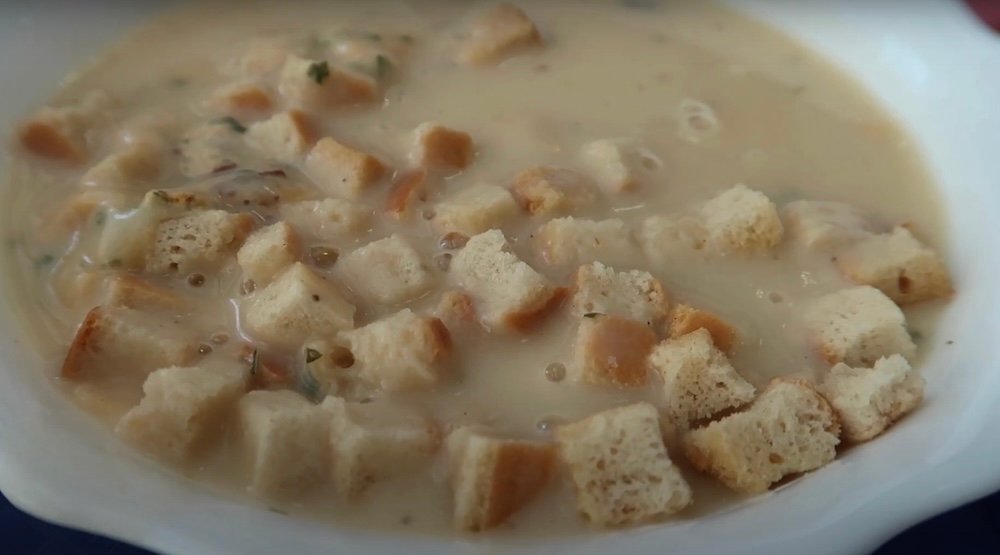
- Traditional Dishes: Indulge in Polish comfort foods like pierogi, bigos (hunter’s stew), and placki ziemniaczane (potato pancakes) at a local milk bar.
- International Cuisine: Explore the diverse flavors of Wroclaw’s vibrant culinary scene, with everything from Italian and Asian to Middle Eastern and vegan options.
- Craft Beer: Visit local breweries and pubs like Browar Stu Mostów and Kontynuacja to taste some of the best craft beers in the region.
Tip: For a truly authentic experience, visit a traditional milk bar for lunch and enjoy a taste of Polish home cooking at an unbeatable price.
Experience Wroclaw After Dark
Wroclaw comes alive after sunset, with a pulsating nightlife scene. Whether you’re in the mood for a quiet evening in a cozy wine bar, a night of dancing at one of the city’s energetic clubs, or a leisurely stroll through the illuminated Market Square, Wroclaw’s vibrant atmosphere makes it an ideal place to spend your evenings. The city’s theaters and cultural venues also host a variety of performances, from classical concerts to contemporary plays, providing plenty of options for a cultured night out.
- Bars and Pubs: Enjoy a drink at one of Wroclaw’s many bars, ranging from laid-back pubs to stylish cocktail lounges.
- Live Music: Check out venues like the Vertigo Jazz Club or the National Forum of Music for live performances in an intimate setting.
- Night Strolls: Take an evening walk through the Old Town or along the River Oder to experience the city’s magical nighttime ambiance.
Tip: Head to the Sky Tower observation deck for a stunning view of Wroclaw’s twinkling lights—a perfect way to end an evening in the city.
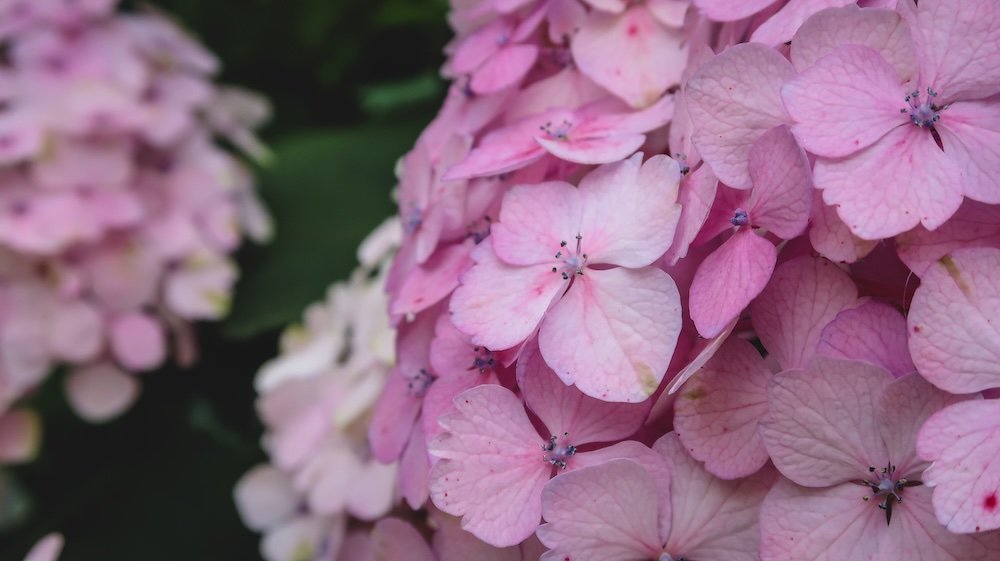
Discover the Green Spaces
Wroclaw is a city of green spaces and beautiful parks. Take a leisurely walk or rent a bike to explore the sprawling Szczytnicki Park, home to the tranquil Japanese Garden and the historic Centennial Hall. For a more adventurous outing, head to the Odra Islands, where you can enjoy a peaceful picnic by the river or rent a kayak for a different perspective of the city. These natural oases offer the perfect escape when you need a moment to relax and recharge.
- Szczytnicki Park: Wander through one of Wroclaw’s largest parks, featuring scenic walking paths, a beautiful Japanese Garden, and a peaceful atmosphere.
- Odra Islands: Explore the network of islands along the River Oder, ideal for picnics, leisurely strolls, and water activities like kayaking.
- Botanical Garden: Visit this lush, historic garden on Cathedral Island to admire its diverse collection of plants and flowers, perfect for nature lovers.
Tip: Bring a book and some snacks for a peaceful afternoon in one of Wroclaw’s parks—it’s a great way to experience the city’s laid-back side.

Final Tips for Your Wroclaw Adventure
As you wrap up your visit to Wroclaw, keep these final tips in mind to ensure a smooth and enjoyable experience. The city’s compact size and excellent public transportation make it easy to get around, but don’t hesitate to explore on foot to fully appreciate its beauty. Keep an eye out for the city’s famous dwarf statues, which add a whimsical touch to your explorations, and be sure to plan your visit to coincide with one of Wroclaw’s many festivals and cultural events. Most importantly, take your time and savor every moment—Wroclaw is a city that rewards those who slow down and immerse themselves in its unique charm.
- Getting Around: Use trams and buses for longer distances, but don’t miss the chance to explore the Old Town and Cathedral Island on foot.
- Dwarf Hunt: Look out for the charming dwarf statues scattered throughout the city—each one has its own story and adds a fun, playful element to your visit.
- Festivals and Events: Check the city’s event calendar for festivals like the Wroclaw Christmas Market, the International Film Festival, and the New Horizons Film Festival.
Tip: Buy a 24-hour public transport pass if you plan to explore a lot—it offers unlimited travel on trams and buses and is a great value for getting around.
Ready to start your Wroclaw adventure? Pack your bags, plan your itinerary, and get ready to fall in love with one of Poland’s most captivating destinations.
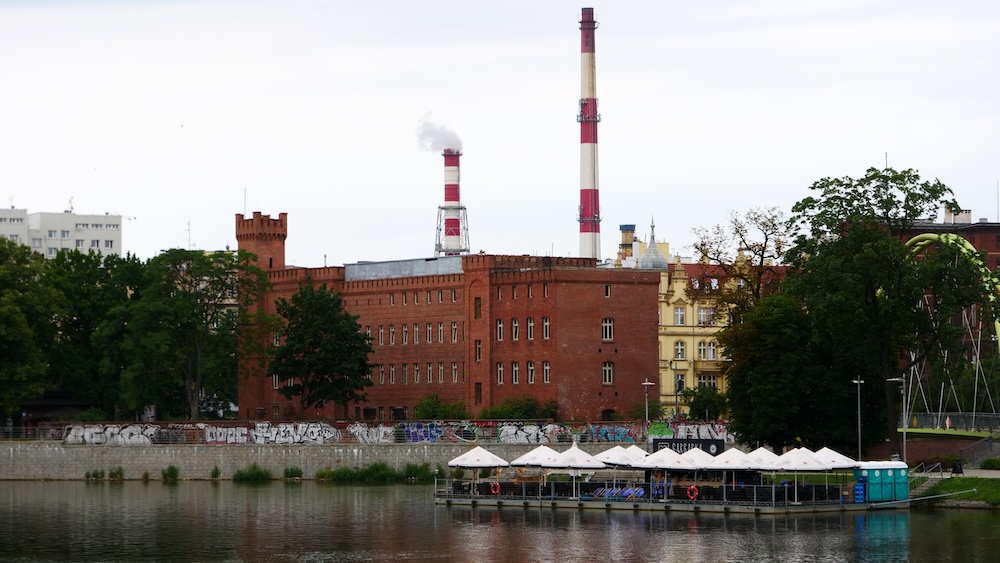
Ode To Wroclaw
In the heart of Poland, a city of wonder, Lies Wroclaw, a gem to be discovered. With history rich and streets alive, This enchanting place will make you thrive.
Wander through its market square, so grand, Marvel at the colorful facades that stand. The Town Hall’s spires touch the sky, As centuries of stories pass you by.
Stroll along the Oder, its waters flow, Reflecting the city’s beauty in a radiant glow. Bridges connect the neighborhoods with grace, Inviting you to explore at your own pace.
Cobblestone streets lead you on a quest, To discover Wroclaw’s secrets, its very best. Ostrów Tumski, an island of ancient allure, Where history whispers and spirits endure.
Visit the Cathedral, its towers reach high, Witness panoramic views that touch the sky. Museums unfold tales of Wroclaw’s past, From art to science, they’re sure to last.
Indulge in culinary delights so divine, Pierogi, kielbasa, flavors that intertwine. Raise a glass of Polish beer or vodka pure, Toast to the memories that will endure.
Join in the festivities, the city’s cheer, As festivals and events draw near. Music, dance, and culture unite, Creating moments of pure delight.
In Wroclaw, hospitality shines bright, As locals welcome you with warmth and light. Embrace the spirit, the stories it imparts, For Wroclaw will forever touch your heart.
So wander, explore, and let your spirit roam, In Wroclaw, a city that feels like home. Uncover its treasures, both old and new, And let this journey be forever etched in you.
